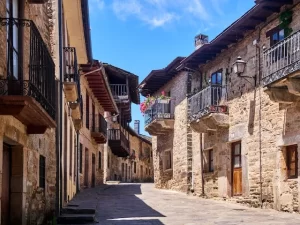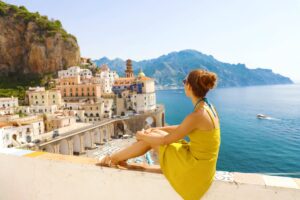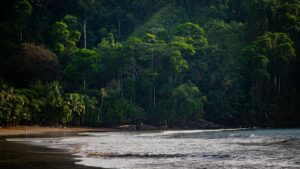21 Best Things to Do in Tirana, Albania (2024 Tirana Guide)
25 min readHaving spent a week or more in every capital in the Balkans, I can confidently say that Tirana is one...
Having spent a week or more in every capital in the Balkans, I can confidently say that Tirana is one of my favourite cities in the region.
Tirana has an alluring aesthetic that combines old Ottoman, nouveau Mediterranean and straight-up contemporary architecture.
Brimming with colourful apartment blocks, cool cafes and first-rate museums, it is the perfect introduction to Albania and the ideal size for an action-packed, 2-3 day city break.
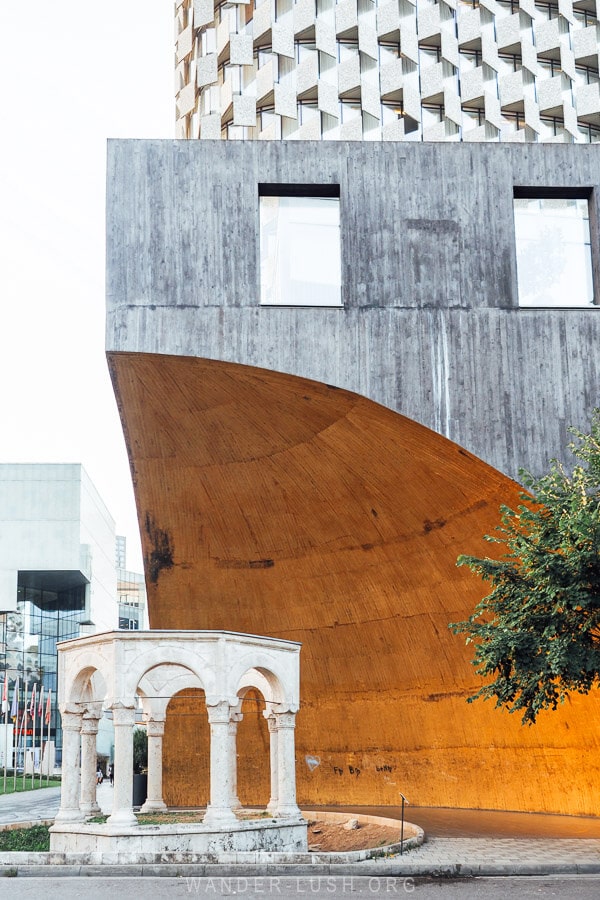
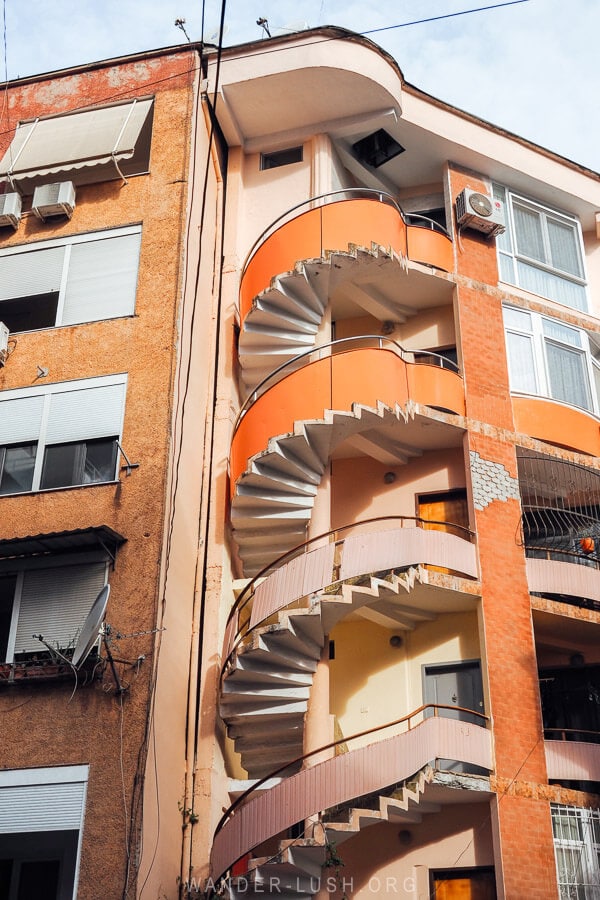
I have visited Tirana twice now: First in 2019, and again this autumn. This guide brings together my favourite things to do in Tirana – both essential and off-beat – plus my food and drink recommendations, day trip suggestions, and general travel tips.
Note: If you’re planning a short stay in the city, I also have a one-day Tirana itinerary. It is a little out of date, but I will be refreshing it soon. For the time being please refer to this guide instead.
Please note: This post contains affiliate links, meaning I may earn a commission if you make a purchase by clicking a link (at no extra cost to you). Learn more.
Where to stay in Tirana
Our recent visit to Albania was bookended with two separate stays in Tirana.
When we first arrived, we spent four days in the Pazari i Ri (New Bazaar) neighbourhood. This area is central but with a local feel, excellent food options nearby, and a nice vibe thanks to the big produce/antiques market.
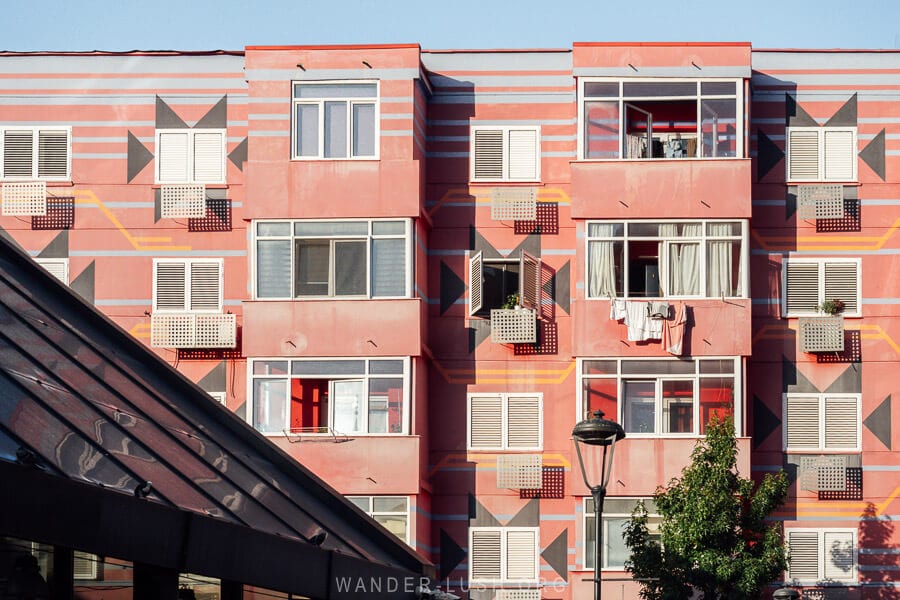
When we returned to Tirana, we stayed in an apartment just off Skanderbeg Square. This area is a lot busier, but its close proximity to public transport (including the airport bus) makes it perfect for a short visit to Tirana.
I am also very fond of the Blloku neighbourhood, located over the river. This area has excellent restaurants and bars, and is a great choice if you want to indulge in Tirana’s nightlife. This is where we stayed on our first trip to Albania back in 2019.
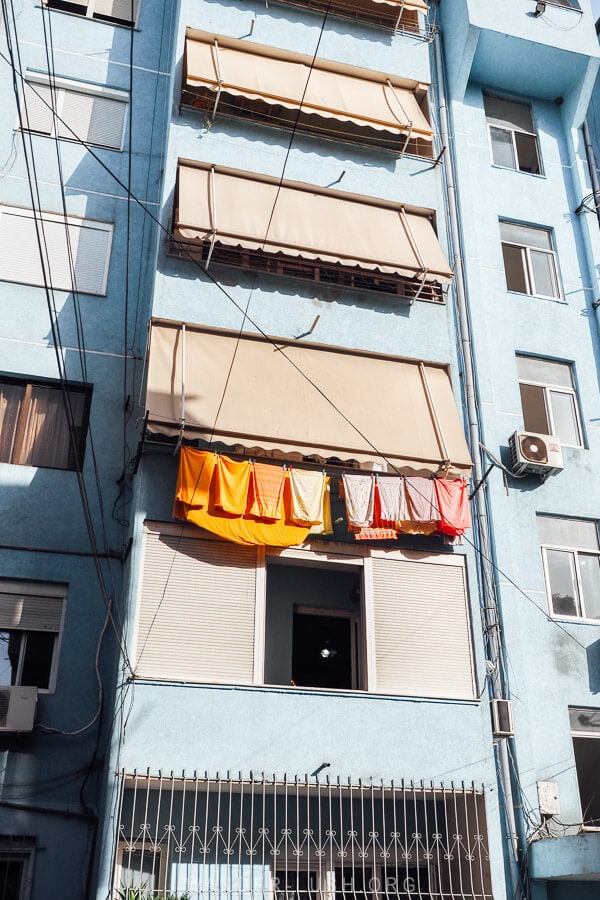
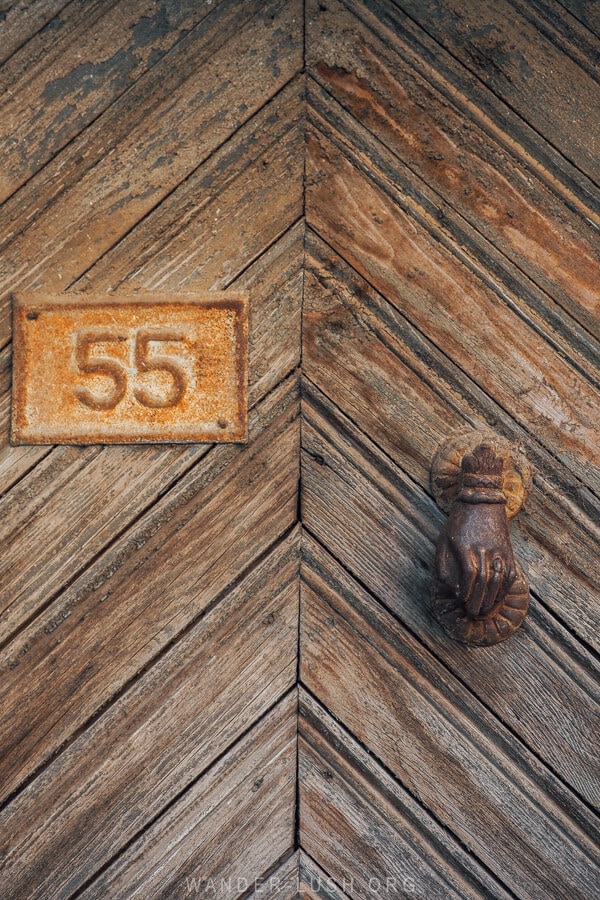
Hostel: Hostel Nena Semi is located on the edge of Blloku, close to Tirana’s best restaurants and bars. Both the mixed dorms and common outdoor spaces are beautifully designed.
Mid-range hotel: Hotel Boka has tidy rooms in front of Pazari i Ri (New Bazaar), walking distance from great cafes and restaurants and a short stroll or bus ride from Skanderbeg Square.
Boutique hotel: Sar’Otel Boutique Hotel in the trendy Pazari i Ri neighbourhood has well-designed rooms and a great breakfast.
Apartment: Konak Skanderbeg Square has two well-appointed apartments with balconies and a shared kitchenette. The location off the main square is terrific for sightseeing.
How to move around Tirana
Tirana is a compact city. The centre is flat and walkable, meaning you can reach most of the main attractions on foot. As a bonus, the roads and sidewalks are mostly in good condition. There is a lot of construction going on in Tirana at the moment so you will find that some areas are a bit trickier to navigate.
For travelling further afield, the Tirana city bus system is very simple to use. Buses are numbered but usually referred to by the district they terminate in – for example there’s the Porcelan bus and the Qyteti Studenti bus.
Single-use paper tickets cost 40 LEK per person.
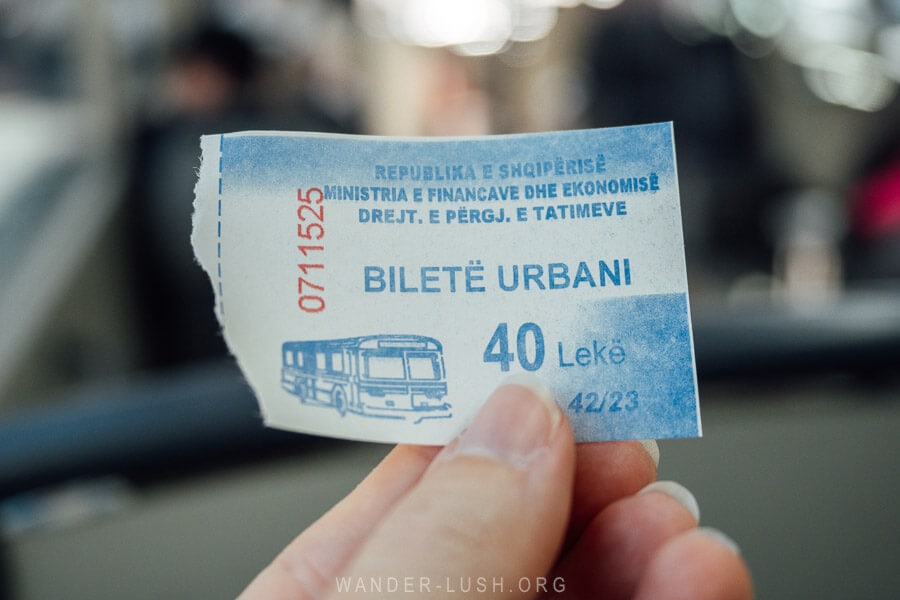
Buses routes are not linked to Google Maps – we found a map online (just Google ‘Tirana bus routes’ for the PDF). Departures are regular enough that you don’t really have to plan ahead (aside from the airport bus, which runs every hour).
To use the buses in Tirana, simply board through any door then grab a seat or find a spot to stand. Tickets are purchased on board with cash (correct change preferred, but there is always change available). The attendant will come to you.
5 quick tips for Tirana
1. Use the Tirana Airport bus to get to the centre. If you’re flying in/out of Tirana, the 24-hour city bus is by far the most convenient transit option. Tickets cost 400 LEK. Alternatively, you can book a private airport transfer. More tips here in my Tirana Airport arrivals guide.
2. Cash is still king in Albania. Card is widely accepted at restaurants, bars, hotels and shops in Tirana and other major cities. Always check the final total before you pay. Cash is absolutely still required for markets, taxis and smaller venues.
3. Every ATM in Albania charges a withdrawal fee. The lowest we could find was the American Bank of Investments, which charges 500 LEK (compared to 600-650 LEK for Tirana Bank and most others).
4. Pick up a Vodafone SIM. Vodafone has the best coverage in Albania and competitive prices. We skipped the tourist package and paid 2,000 LEK for 30 GB of data (valid for 30 days) plus an additional 200 LEK for our SIM.
5. Tirana is an overwhelmingly safe city. Even for solo female travellers. Street crime is rare, and there are no ‘no-go’ neighbourhoods. Mind your belongings, avoid walking late at night, and exercise common sense caution. English is widely spoken.
Essential things to do in Tirana
1. Immerse yourself in Albanian history at Bunk’Art, one of Europe’s most unique museums
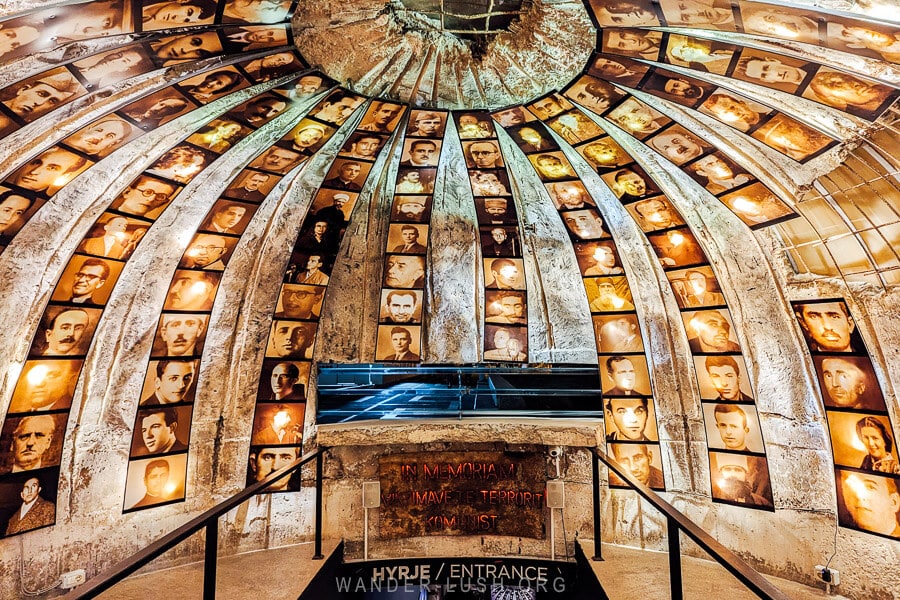
Bunk’Art is arguably Tirana’s most popular tourist attraction. I think its reputation as one of Europe’s most unique museums is well deserved, hence why I’ve put it here at the top of my list.
Bunk’Art is actually two separate museums. Bunk’Art 2 is located in the centre of Tirana, just off Skanderbeg Square. Bunk’Art 1 lies on the outskirts of the city. Both are worth visiting, but in my opinion the original Bunk’Art 1 is more impactful.
To begin with, the entrance to Bunk’Art 1 through a long tunnel is much more dramatic. The scale of the 1978-built bunker is also more impressive: 106 rooms arranged over five floors, big enough to house politicians and approximately 700 members of the nearby military regiment in the event of a nuclear attack.
It is the only bunker in the country with a full-sized underground congress hall, a concept borrowed from the North Koreans. It also had sleeping quarters for Enver Hoxha (although the dictator never spent a night here).
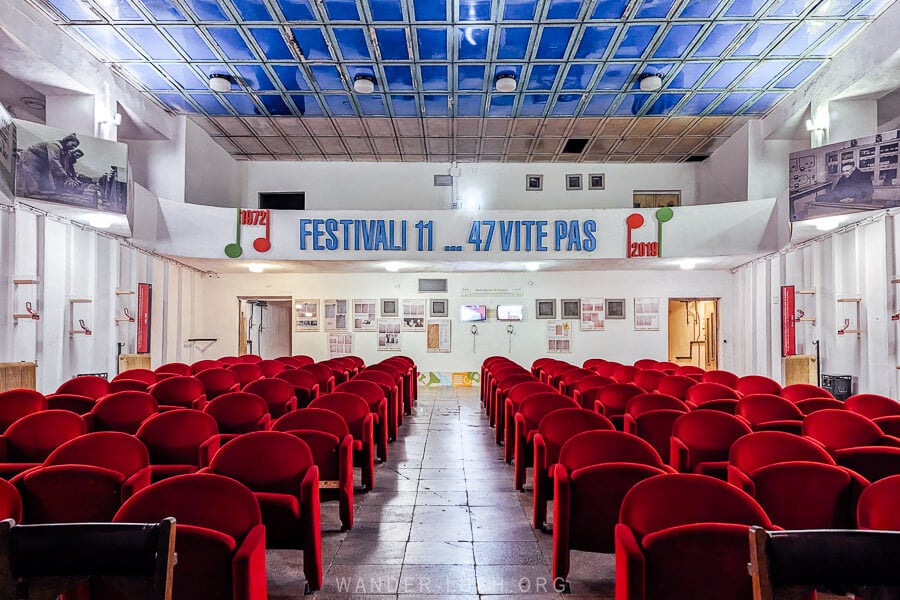
Both Bunk’Arts deal with Albania’s communist period, but the subject material differs slightly. Bunk’Art 1 examines the country’s time under Fascist Italy, WWII and the German invasion, and the post-liberation Albania of the 1990s. Bunk’Art 2 focuses on the secret police and Sigurimi.
I personally found the latter to be more emotive and more challenging to consume. Bunk’Art 1 is no walk in the park, but it is slightly more objective and historically based versus Bunk’Art 2, which takes a more personal, anecdotal approach.
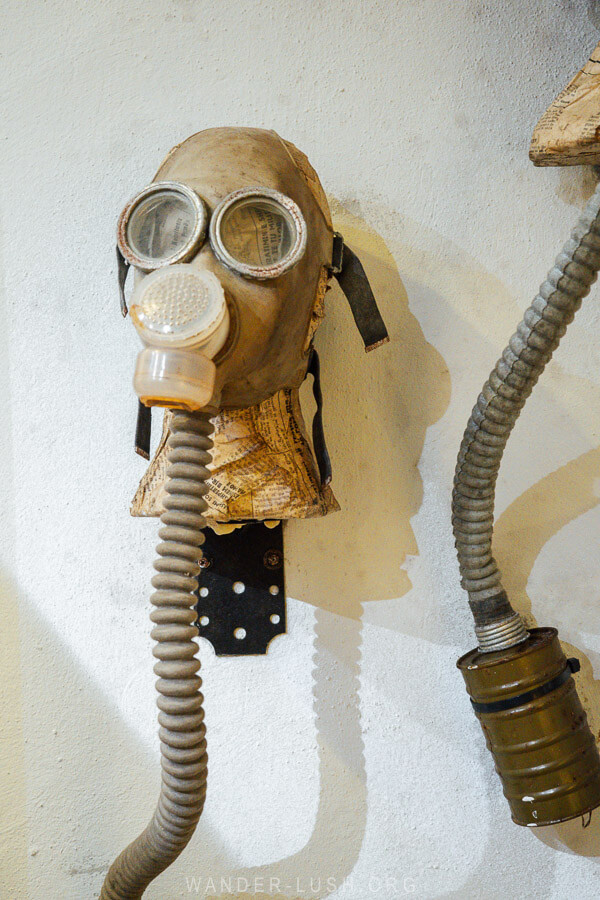
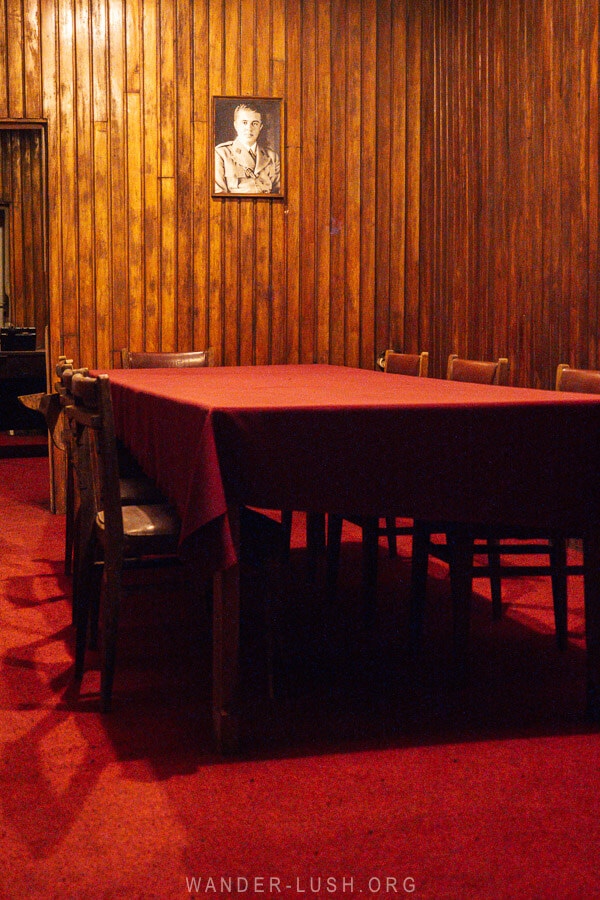
Tip: If you choose Bunk’Art 1, then I also recommend visiting The House of Leaves. Similar to S-21 in Phnom Penh, it is set inside a former interrogation facility and looks at the Sigurimi in detail.
Despite the name, Bunk’Art is definitely more of a museum than a gallery – though there are a few tasteful contemporary art pieces towards the end of the exhibition.
It is huge and there is a lot of text to take in. You need at least two hours for Bunk’Art 1. Also keep in mind that it’s cold down there – around 16 degrees Celsius – so you should bring a light jacket. I also found it quite humid.
Entrance to Bunk’Art costs 700 LEK per person. Combination tickets for Bunk’Art 1 and Bunk’Art 2 are available for a discounted price.
For an additional 100 LEK, you get access to the audio guide app – but you need to bring your own headphones. In my opinion, there is enough signage (in English) to get by without the guide.
Bunk’Art 1 is open every day from 9.30am until 4pm. To get there from the centre, take the Porcelan-bound bus from the stop on Friendship Park behind Skanderbeg Square (see the location here on the map) and alight in front of the museum entrance. The trip takes 20-30 minutes.
Bunk’Art is close to the Dajti Express cable car lower station, so most people combine it with a trip up the mountain (see #17 on this list below). Local pizzeria Mix Pizza is a nice spot to grab an easy lunch nearby.
2. Scale the new Pyramid of Tirana
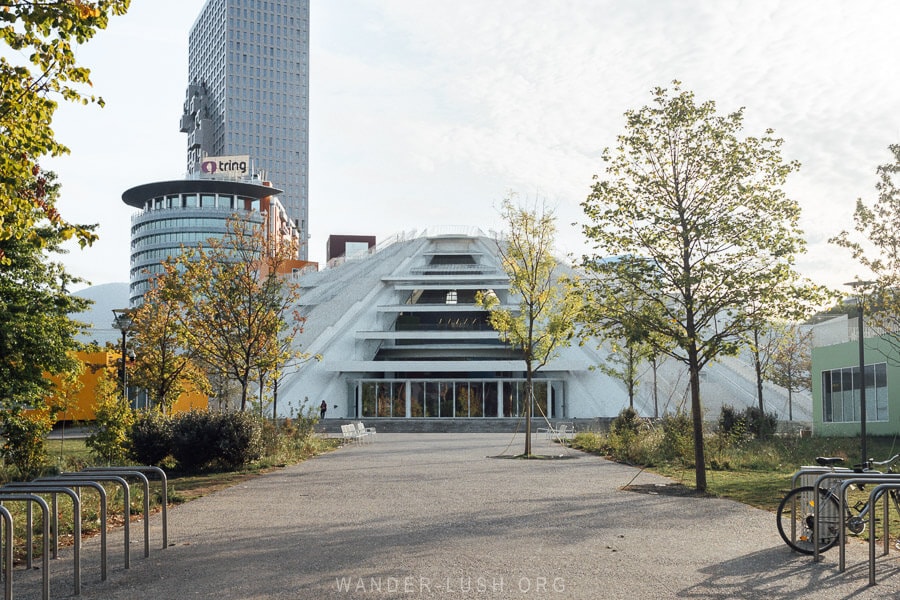
After years of being cordoned off and decades of lying in a state of disrepair, in October 2023 the Pyramid of Tirana officially reopened to the public. I was lucky enough to be there for the launch.
The unofficial symbol of Tirana, the original Pyramid was built in 1988 as a museum for Enver Hoxha. It served its intended purpose for a mere three years before it was converted into a conference centre, then a NATO base, a radio station, and finally a nightclub.
Today the Pyramid of Tirana has been completely remodelled and returned to the people. It is completely unrecognisable compared to the old Pyramid I saw back in 2019 (here are some photos).
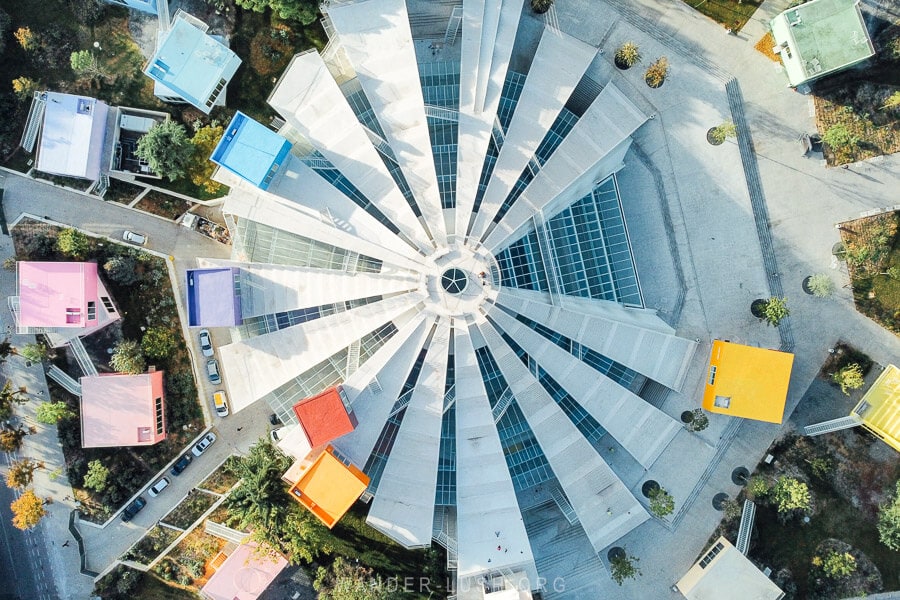
The choice of new materials is very interesting – white on white stone, plexiglass and metal. It is all clean lines and transparent surfaces.
Climbing the old Pyramid was considered rebellious. The new Pyramid flips that idea on its head and encourages the public to interact with it. The structure is completely covered with stairs and open gangways.
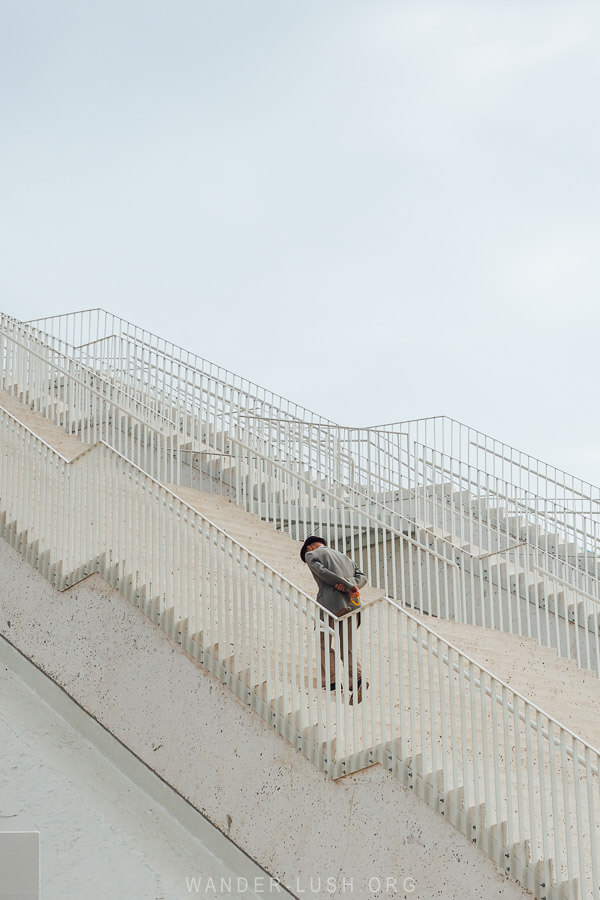
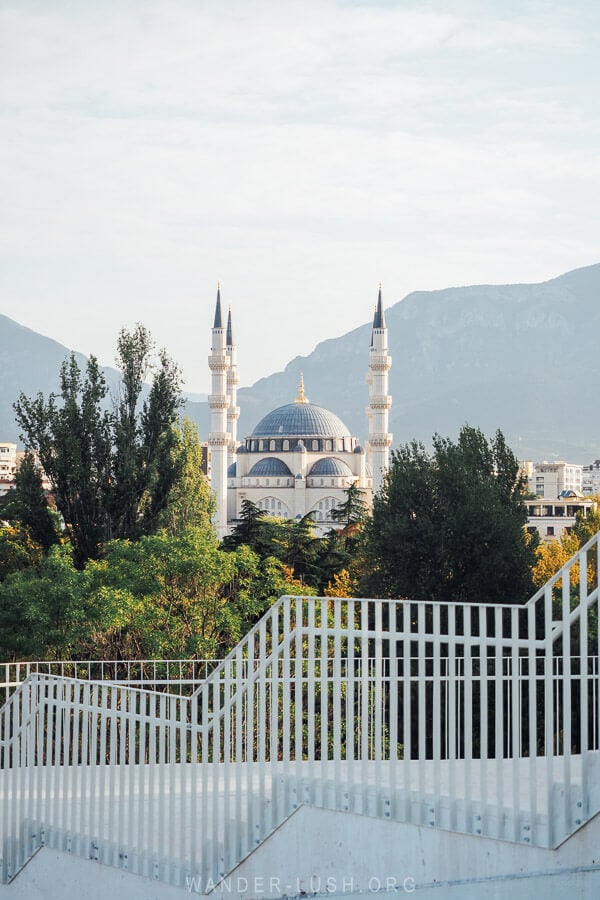
Admittedly there is not much of a view from the top, but you can spot the new mosque and a few other landmarks.
Colourful cube-shaped buildings teetering at all angles surround the Pyramid and will eventually house businesses. Inside, the Pyramid holds offices and work spaces for the youth education organisation TUMO.
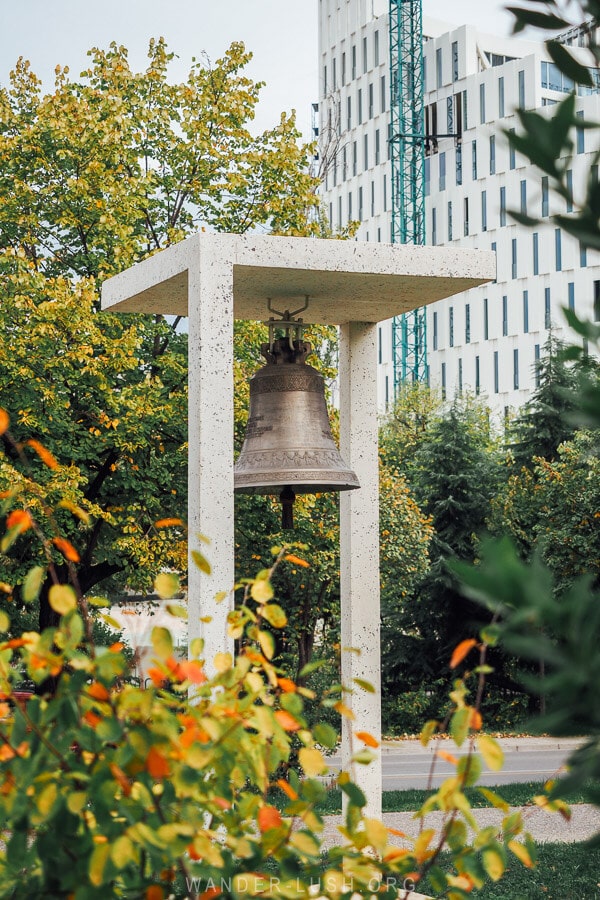
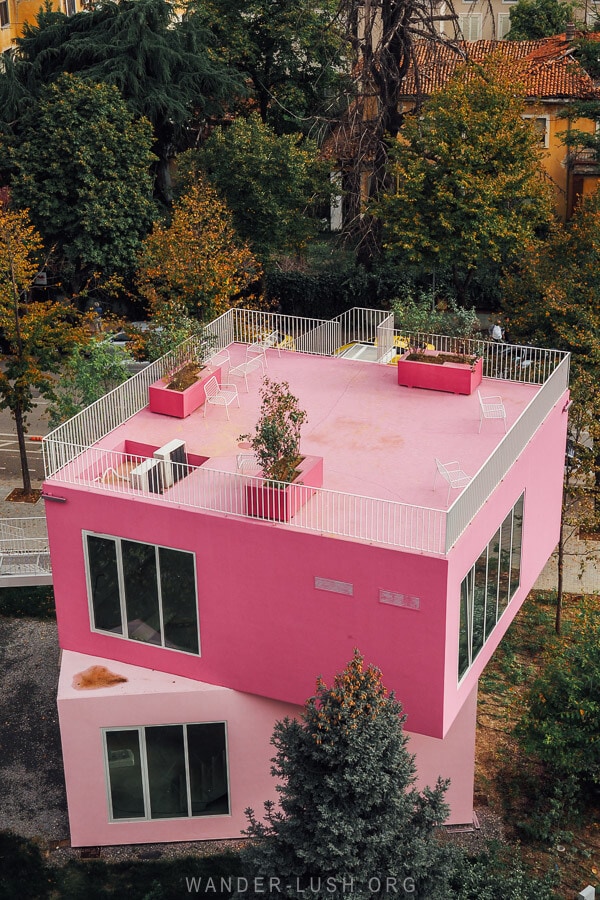
The Peace Bell (above left) is a monument fashioned from 20,000 bullet cartridges collected by children during Albania’s civil unrest in 1997. It has been left in place, adjacent to the Pyramid, but it no longer hangs over a concrete water feature like it did in the past.
3. Explore Blokku, Tirana’s former communist quarter
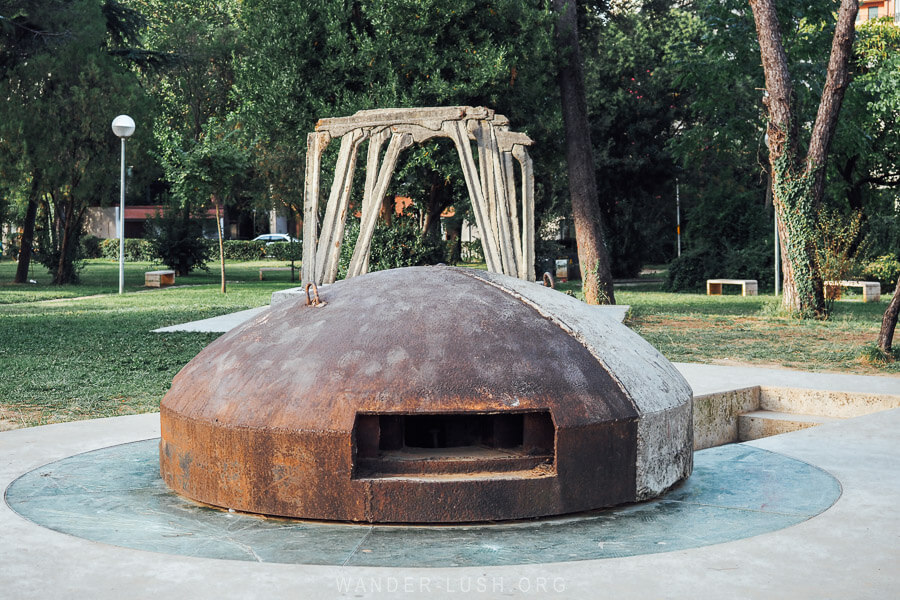
Blloku or ‘the Block of Leadership’ is a compact riverside neighbourhood that faces onto the river on the western side of the Pyramid.
During Albania’s communist period, it was a restricted area purpose-built to house senior government officials. Ordinary citizens were prohibited from walking the streets or frequenting any of the businesses within Blloku’s heavily guarded borders.
When communism fell, there was a kind of cultural rebellion and a mad rush to reclaim Blloku as part of the city. A huge number of cafes, bars, boutiques and nightclubs moved into the old villa houses, transforming the once tightly controlled zone into one of Tirana’s most lively (and affluent) precincts. How’s that for comeuppance!
Enter Blloku from the western side via the Postbllok Memorial and checkpoint (pictured above). This sculptural ensemble is dedicated to the victims of the communist regime, and features an original bunker, an art piece made from concrete pillars from the Spaç labour camp, and a fragment of the Berlin Wall.
On the next block, you will spot Enver Hoxha’s former residence, a two-storey modernist villa with a small garden and fountain. The house is suspended in time, blinds drawn and furniture still visible through the big windows, as if no one quite knows what should become of it.
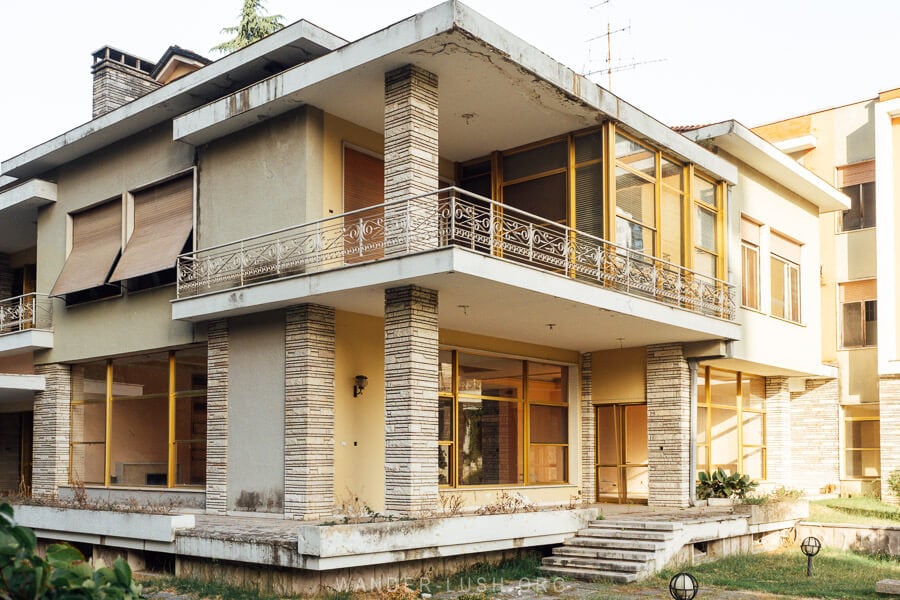
There are some interesting pieces of architecture just beyond Blloku’s limits: The Palace of Congress, Mother Teresa Square (below left) and University of Tirana campus (below right) are a short walk south.
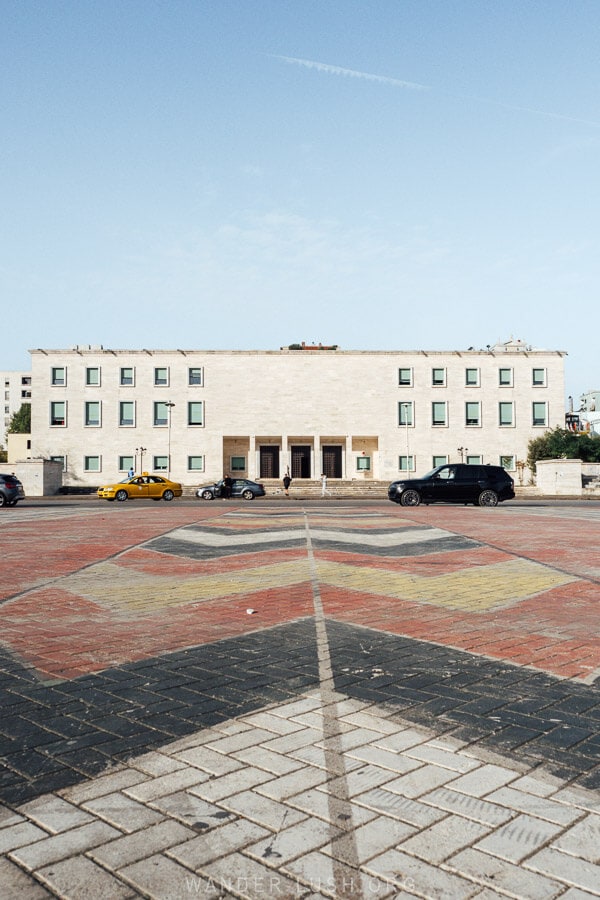
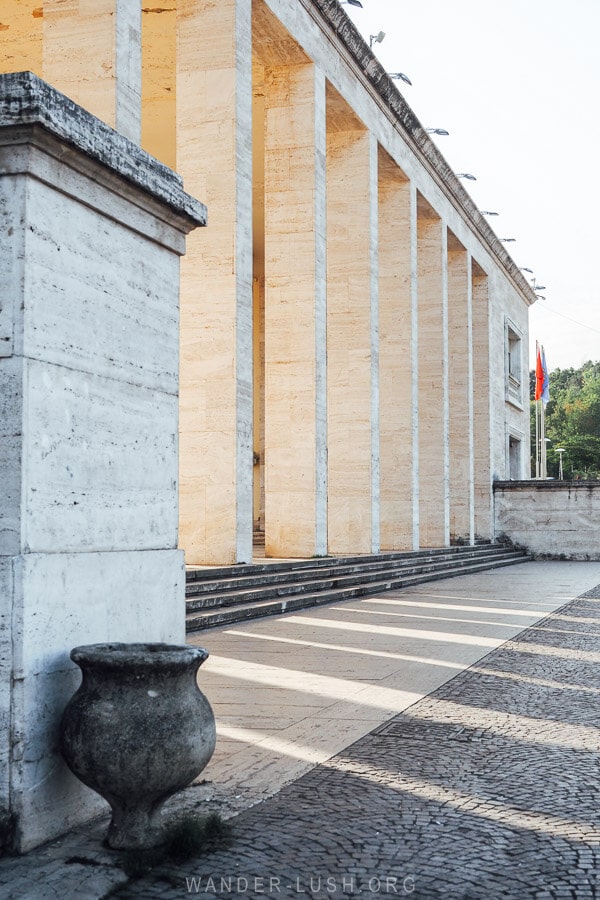
Continue west to visit the Tulla Culture Center, and take a detour down the narrow back streets to see painted apartment blocks, street art, and the famous rainbow mural at Wilson Square.
4. Drink at a quirky communist-themed bar, one of the best things to do in Tirana at night
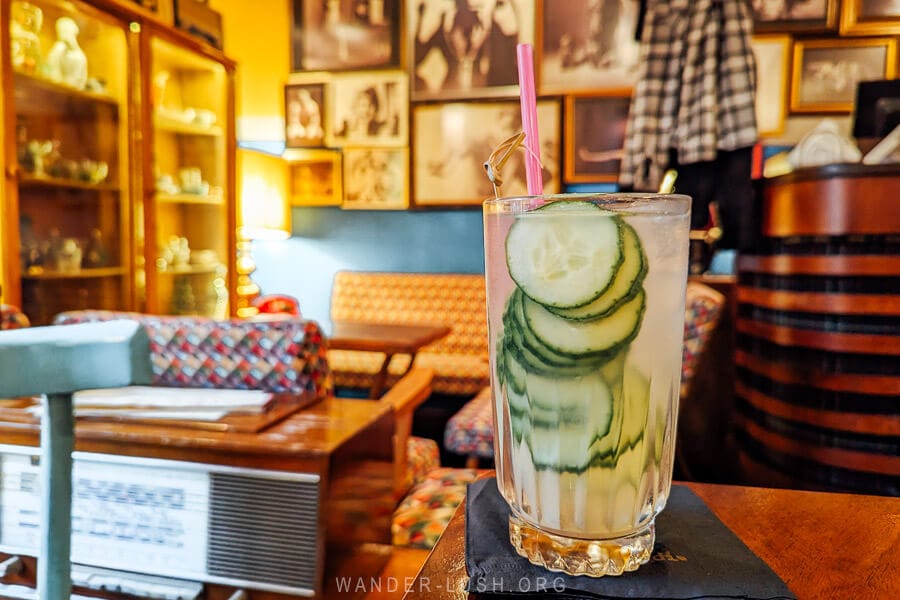
Some of Tirana’s best bars are located inside the Blloku district. Interestingly, a few of them are communism-themed, decked out with relics from the 1980s and old propaganda posters.
On our first visit to Tirana, I enjoyed sifting through the artefacts on display at Komiteti. This famous cafe-bar-museum now has branches around Albania.
On this trip we visited Radio Bar, a cosy space with retro decor (including, you guessed it, lots of vintage radios). The cocktails are excellent – we both had the Tirona Mule with Black Eagle vodka, ginger beer and lime.
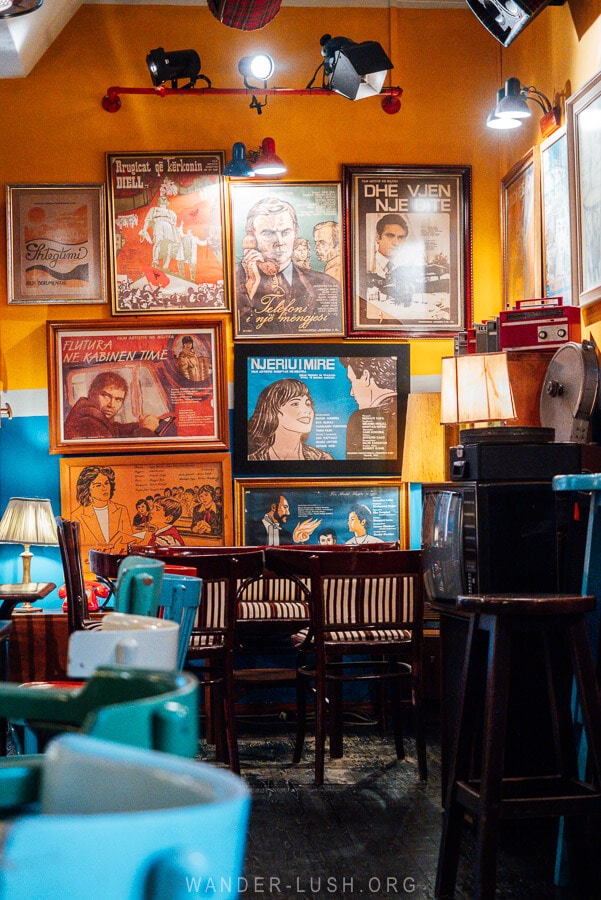
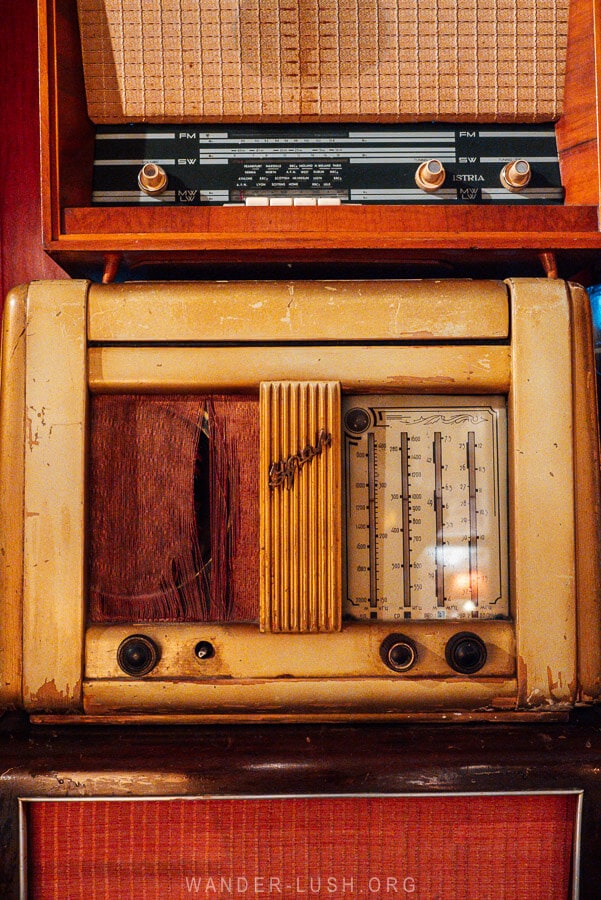
Illyrian Saloon is another popular bar in Blloku while for food, I recommend Salt Tirana (international cuisine), Era (Albanian fare) and Spaghetti Western (burgers). You can find more Tirana restaurant recommendations in the next section.
5. Cross the Tanner’s Bridge
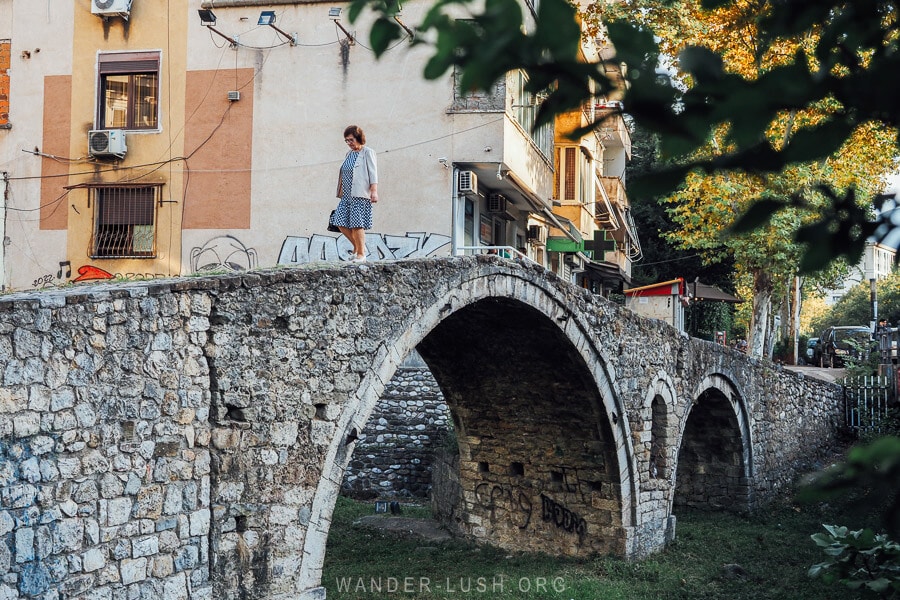
Tirana is bisected by the Lana River, which is more of a narrow canal. To travel between the main part of the city and Blloku, you must cross any one of a number of bridges.
The Tanner’s Bridge must have stretched over the river at some point, but not anymore. Today it is pushed back from the water’s edge in a bit of an awkward position, but people still seem to use it on their daily commute to access the buildings behind the boulevard.
One of the oldest structures in Tirana, the arched stone bridge was built by the Ottomans in the 18th century as part of a trade route. Farmers and tanners used the footbridge to transport their livestock to the city’s leatherworks and butcher shops – hence the moniker.
We encountered many more half-moon Ottoman bridges and aqueducts like this one on our drive around Albania.
6. Do a lap around Skanderbeg Square (but don’t climb the Clock Tower)
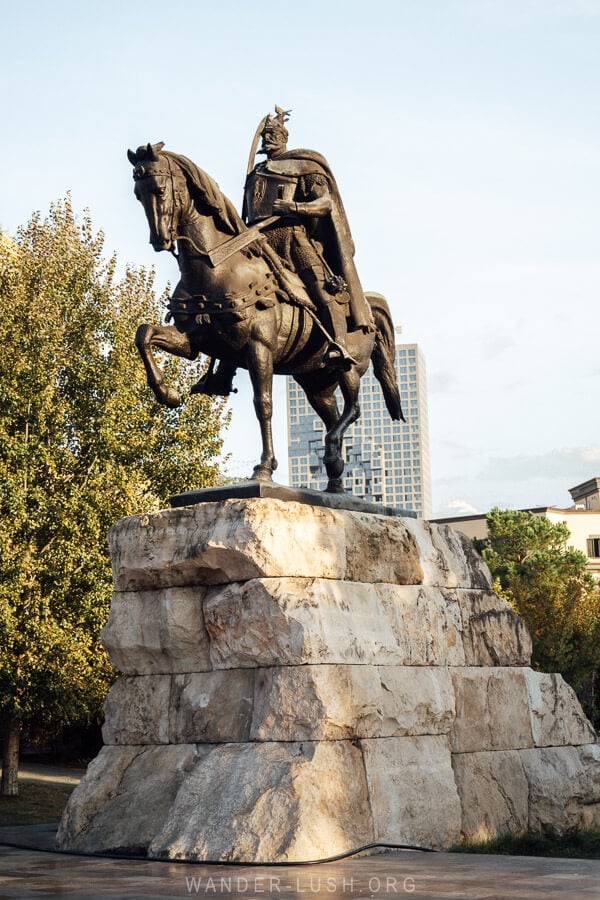
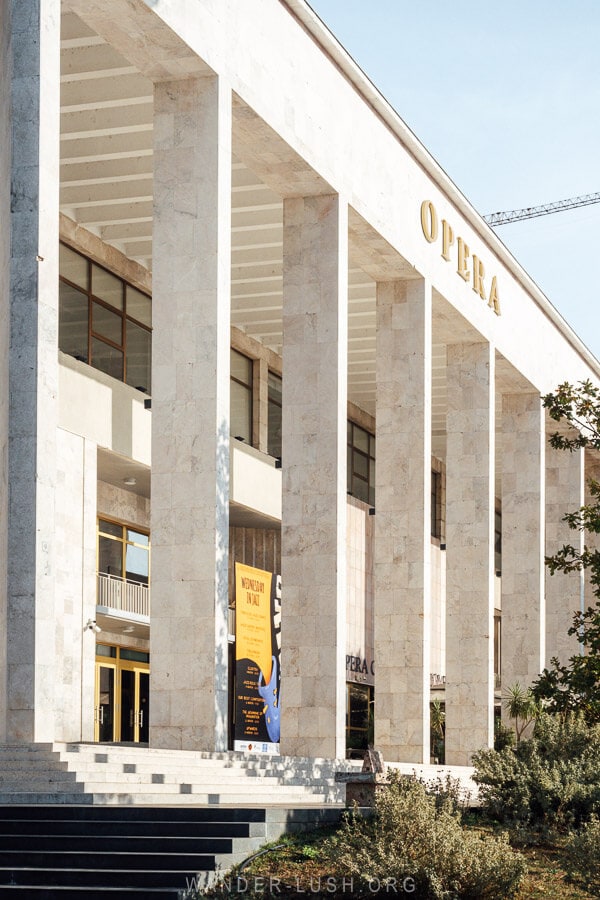
Named after Albania’s national hero, the military commander who led a decisive rebellion movement against the Ottoman Empire, Skanderbeg Square is the heart of Tirana. Refurbished in 2018, it covers more than 10 hectares, including a huge 40,000-square-metre esplanade in the centre.
As you move across the massive plateau, you’ll notice slight variations in the colour of the stone underfoot. That’s because the paving – a giant tapestry of sorts – has been pieced together with different types of granite and travertine sourced from every corner of Albania. The square is slightly pitched so that on hot days, water can be pumped across the paving to cool it off.
Everything you see – from the stone to the soil and the trees planted on the periphery – was sourced locally in Albania.
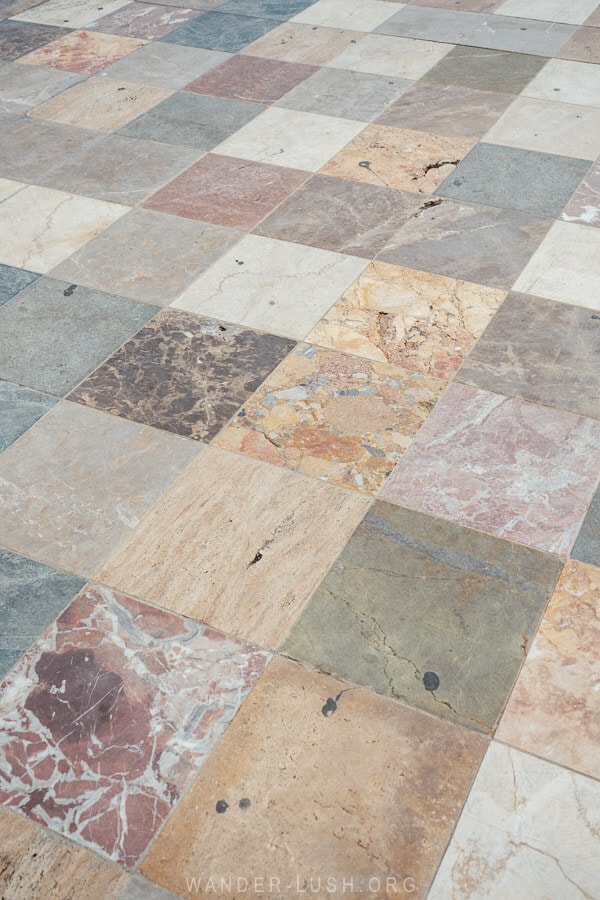
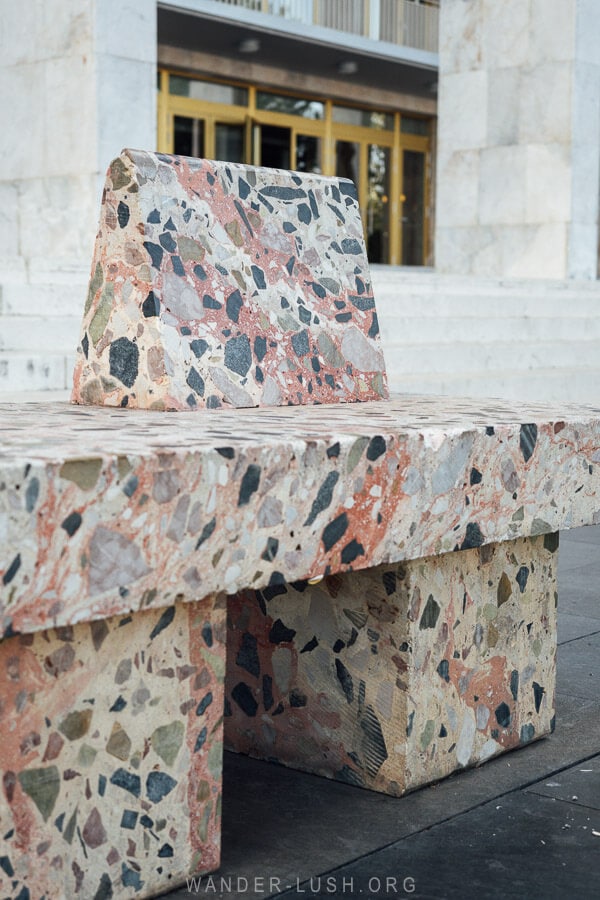
Some of Tirana’s most important buildings and landmarks are dotted around Skanderbeg Square. At the southern end, there is an equestrian statue dedicated to Gjergj Kastriotit (AKA Skanderbeg). Behind him, Parku Europa is a small greenspace with a grouping of government buildings on its edges. To the east, there is City Hall and Bunk’Art 2, and to the west, the Resurrection of Christ Orthodox Cathedral.
At the south-western corner, the Bank of Albania (Banka e Shqipërisë) – my favourite building in Tirana – is a fine example of Italian Rationalist architecture (more on that below).
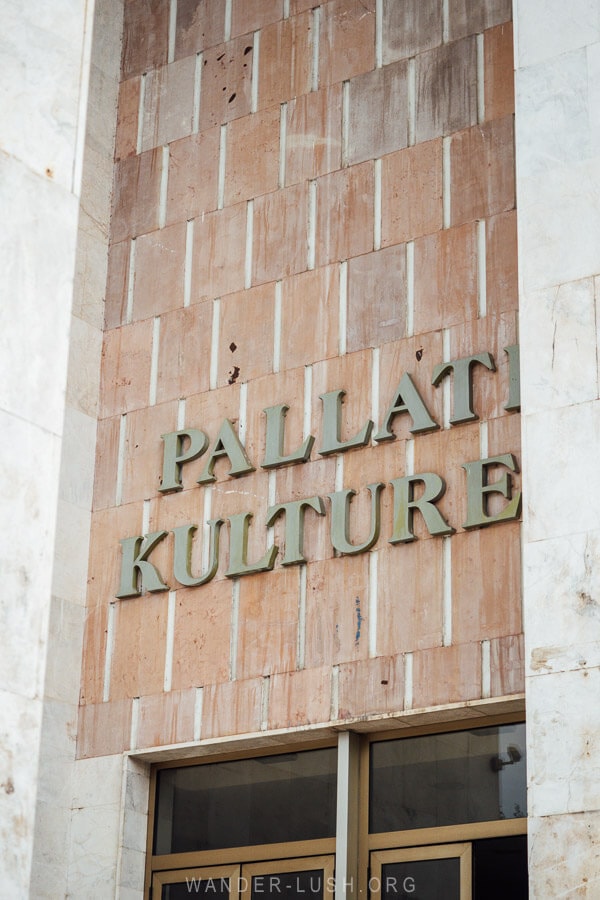
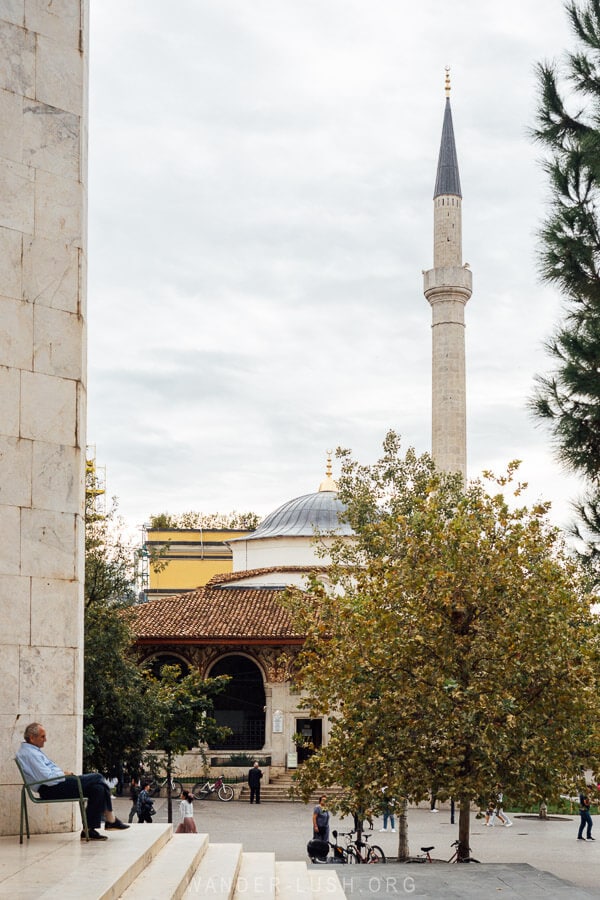
The eastern flank of the square is dominated by the Palace of Culture, a multipurpose hub that contains the Opera and Ballet Theatre, a library, cafes and a branch of the lovely Adrion Bookstore. Its cornerstone was laid by Nikita Khrushchev in 1959.
The National Historical Museum steals the show with its 565-square-metre mosaic panel. It retells the history of the nation through different protagonists.
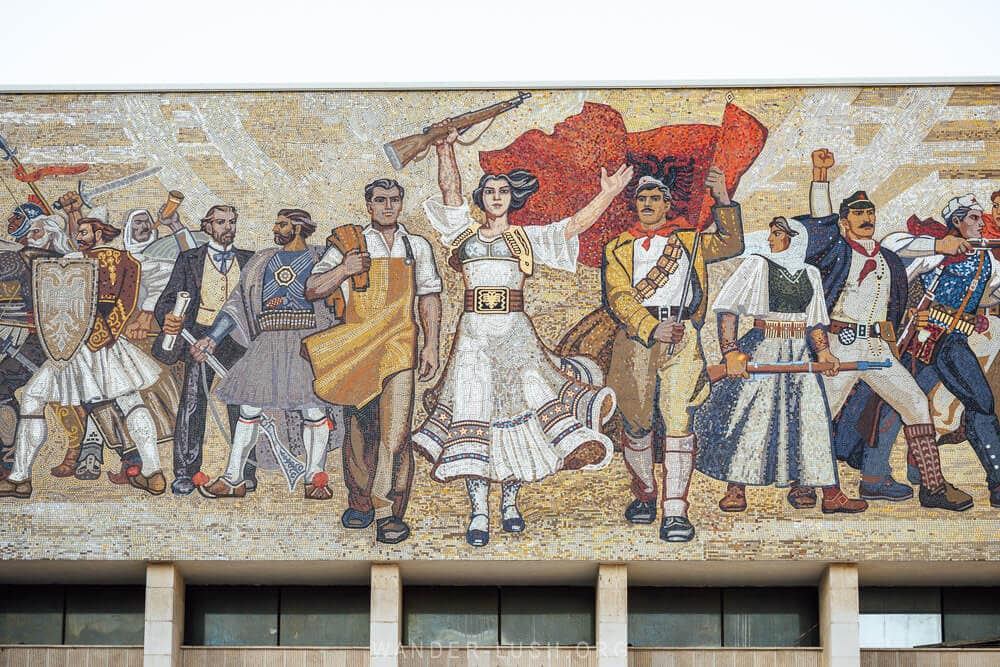
In November 2019, the mosaic was badly damaged by the earthquake that struck northwestern Albania. A team of experts embarked on the massive task of restoring it piece by piece, unveiling the renewed mosaic in May 2023. What is really cool is that some of the five original mosaic artists were invited to work on the project.
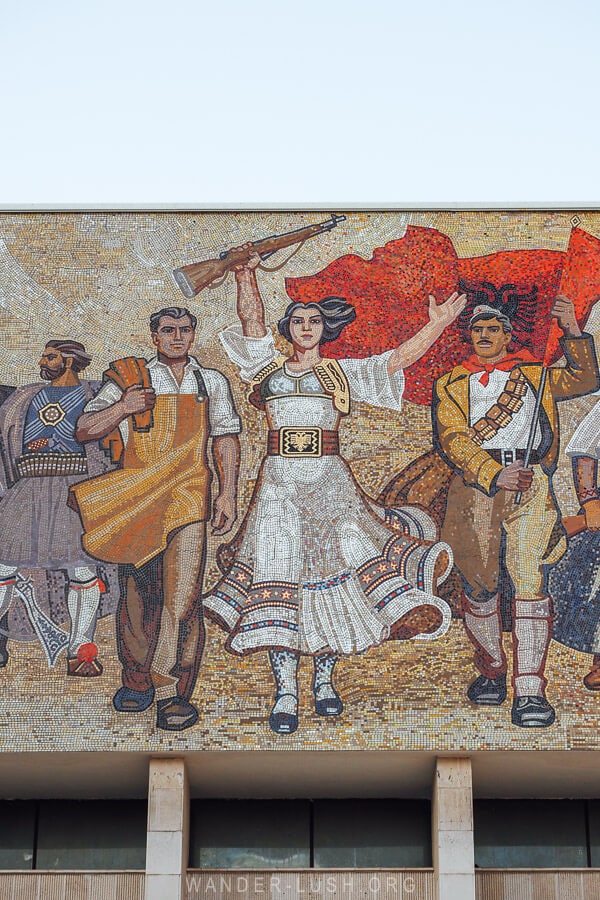
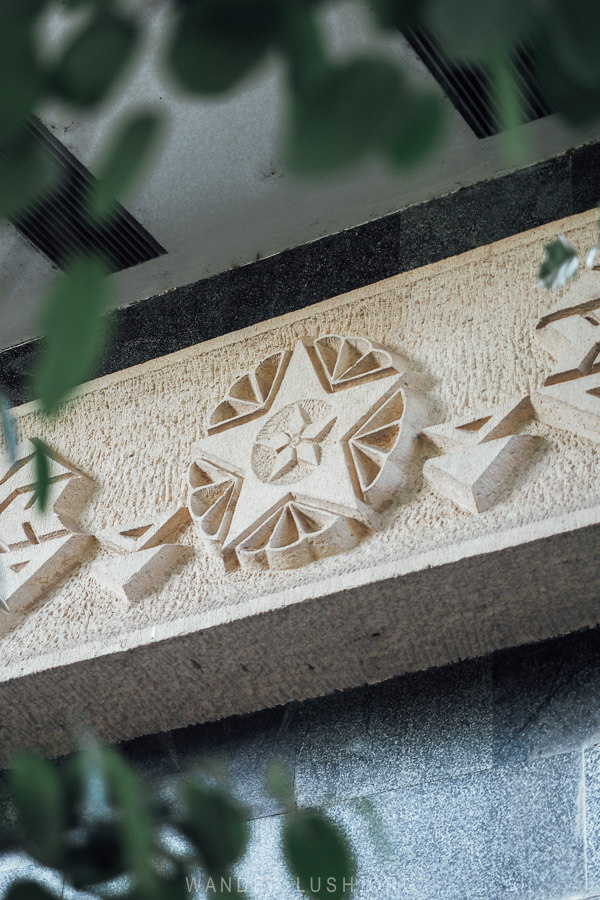
The museum itself is scheduled for a much-needed overhaul. There are other museums in Tirana that are more worthy of your time (Bunk’Art but also #9, #10 and #11 below).
Two of Tirana’s oldest monuments, the Clock Tower (Kulla e Sahatit) and Et’hem Bej Mosque – described by author Ismail Kadare as “two feeble and decrepit old friends” – are dwarfed by the new apartment buildings that surround it. Still they staunchly hold their positions side by side on the south-eastern corner of the square.
While I definitely recommend taking the time to go inside the mosque (see below), I don’t recommend paying to ascend the Clock Tower. The view from the top is underwhelming and in my opinion, it’s not worth the ticket price nor the climb.
For the best city views of Tirana, see Observator Bar (number #19 on this list).
7. Go inside the painted Et’hem Bej Mosque
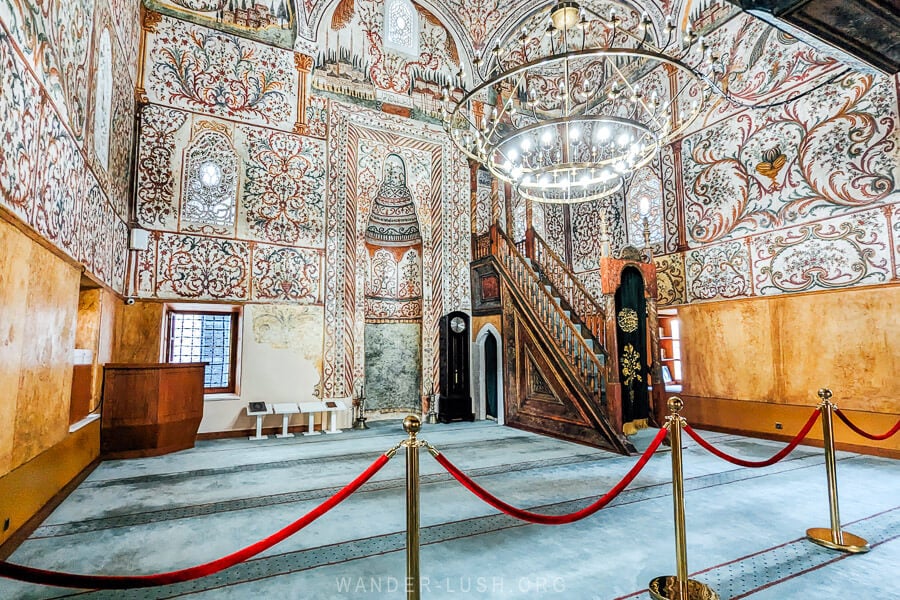
Completed in the early 1820s, the Et’hem Bej Mosque is the only surviving structure from a complex of buildings that once defined Old Tirana. Two more mosques and a bazaar have been lost to time, but this house of worship managed to survive both conflict and communist suppression.
More than half of Albanians (around 57%) follow Islam, yet for me Albania is more about the Orthodox churches than the mosques. Et’hem Bej is an exception – it is one of very few heavily decorated mosques and because of this, it is a must-see in Tirana. Restored in 2019, both the interior and exterior are richly decorated with frescoes.
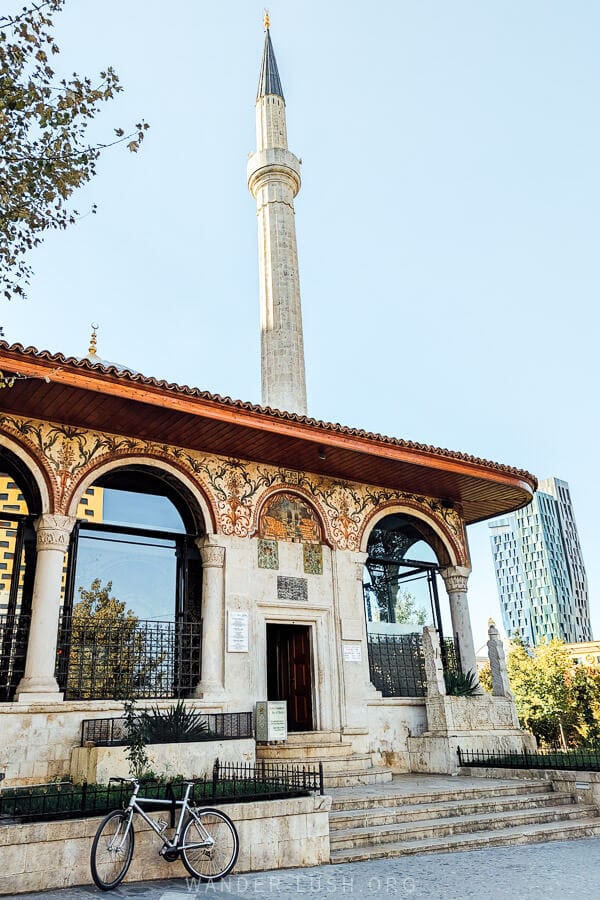
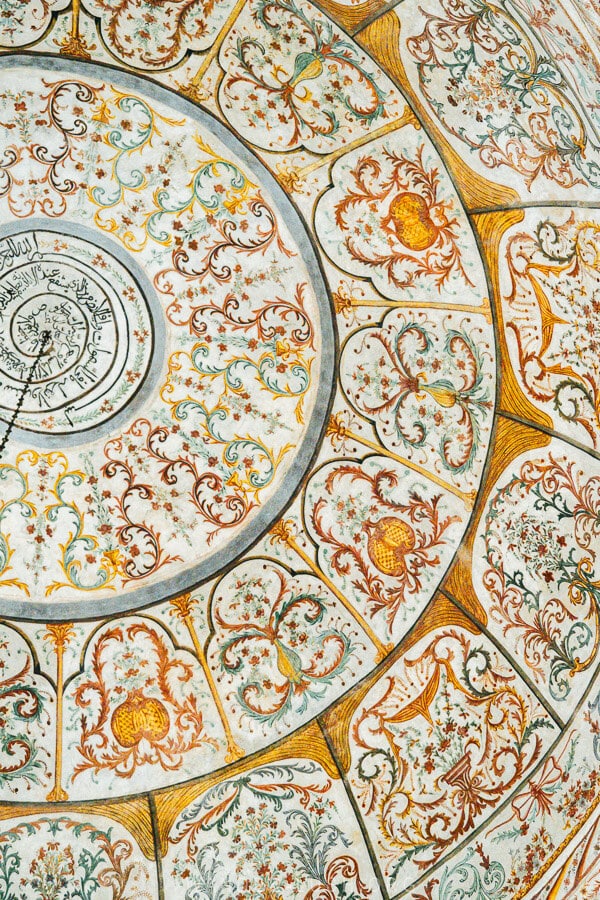
The mosque is open to the public at set hours from 9am-12pm and 2pm-3.30pm every day except Friday. On Fridays, the mosque is only open for a short window after prayers, from 2.30pm-3.30pm. Visitors are required to dress modestly and remove their shoes before entering. Women must cover their hair – remember to carry a scarf with you.
8. Stop by the new Namazgah Mosque
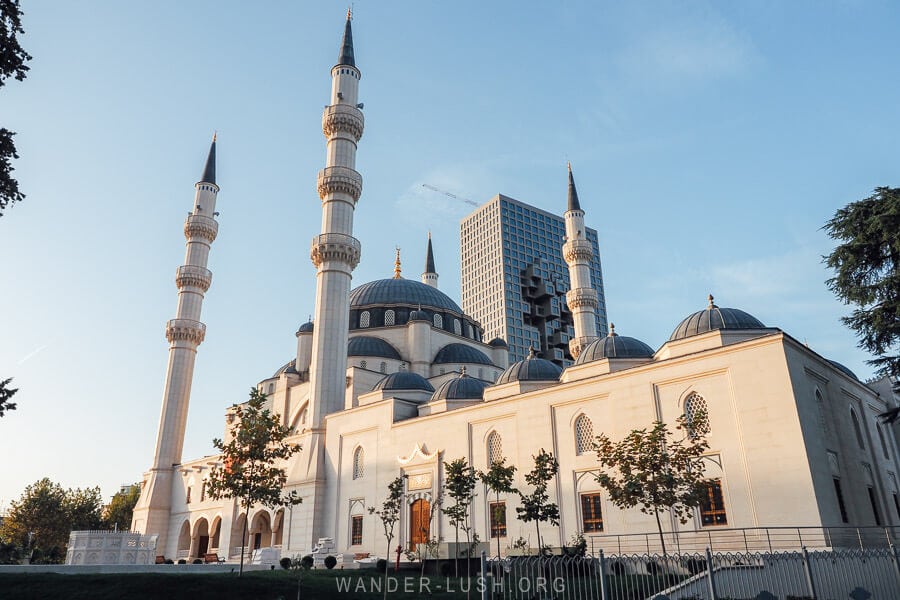
Soon to be the biggest mosque in the Balkans, the Namazgah Mosque or Great Mosque of Tirana was nearing completion at the time of my recent visit. It will have a capacity of 4,500 people, quite an upgrade from the Et’hem Bej Mosque, which holds fewer than 100 people.
The mosque is absolutely monumental and has a huge footprint. Four minarets spiral 50 metres high, and the central dome reaches 30 metres tall.
The new mosque is located close to the Tanner’s Bridge.
Museums in Tirana
9. Make an appointment to go inside the Bank of Albania, a masterpiece of Italian Rationalist architecture
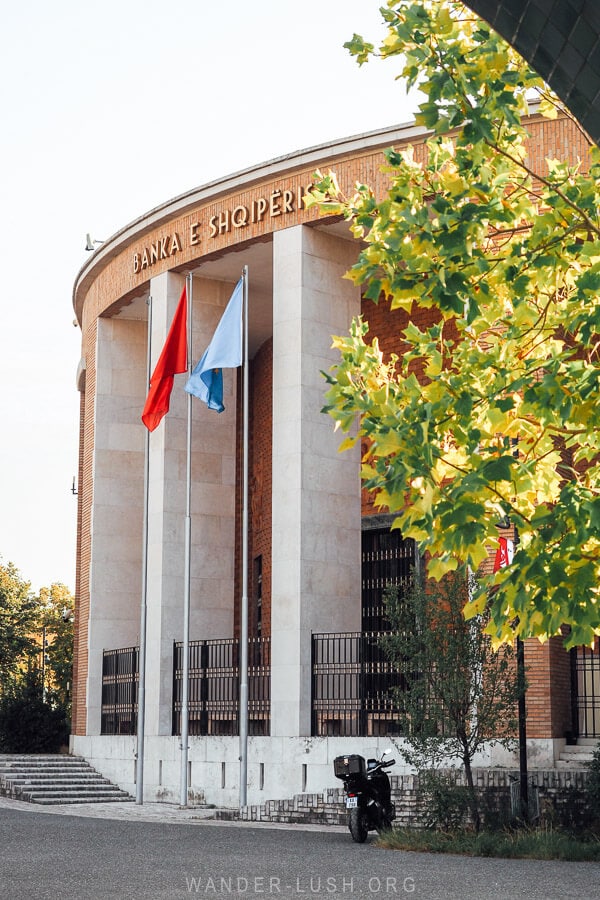
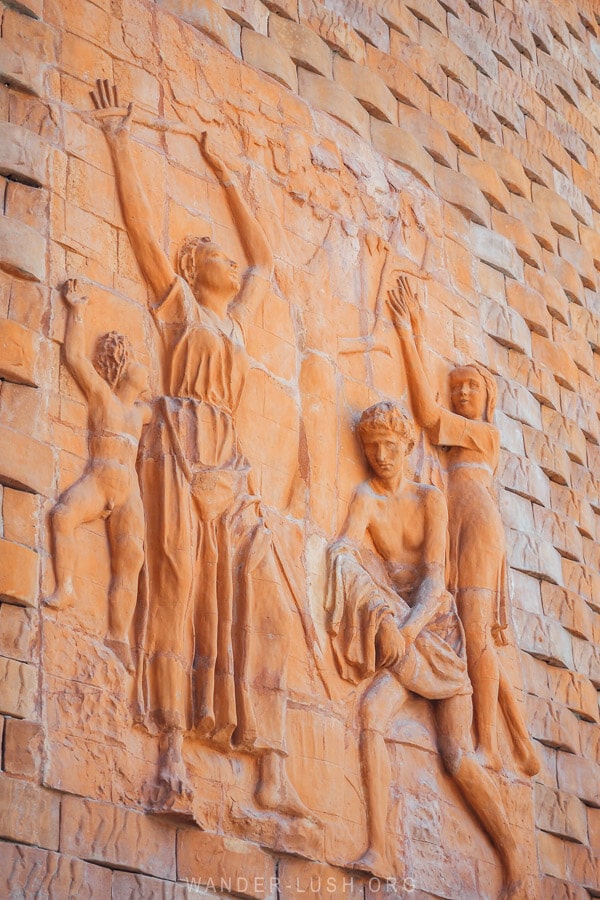
Back to Skanderbeg Square and one of the best things to do in Tirana if you’re a fan of architecture like me.
The handsome Bank of Albania building was designed by Italian architect Vittorio Barrio Morpurgo in 1938, when Albania was ruled by King Zog I and aligned with Mussolini’s fascist Italy. (A year later, Italy invaded and annexed Albania, driving Zog into exile.)
I find this period of history and its monuments fascinating. There are some very interesting examples of Italian Rationalist architecture in Albania, including the main bank in Korca. Tirana’s landmarks from the period are the most impressive.
With its cash desks closed, the bank has been off-limits to the public for many years. But you can get inside by visiting its small money museum. Having heard about the interior mosaics, I was desperate to get in. I hadn’t made a mandatory online appointment, but security took pity on me and assigned me a guide. I spent an incredible 60 minutes inside the bank!
The original Venetian glass mosaics are definitely the highlight. Friezes depict Albanian life and industry – pressing wine, cropping fields – and are a bit faded, but still absolutely splendid. The rotunda-shaped teller room where they are located has booming acoustics and must have been very atmospheric when it was full of customers.
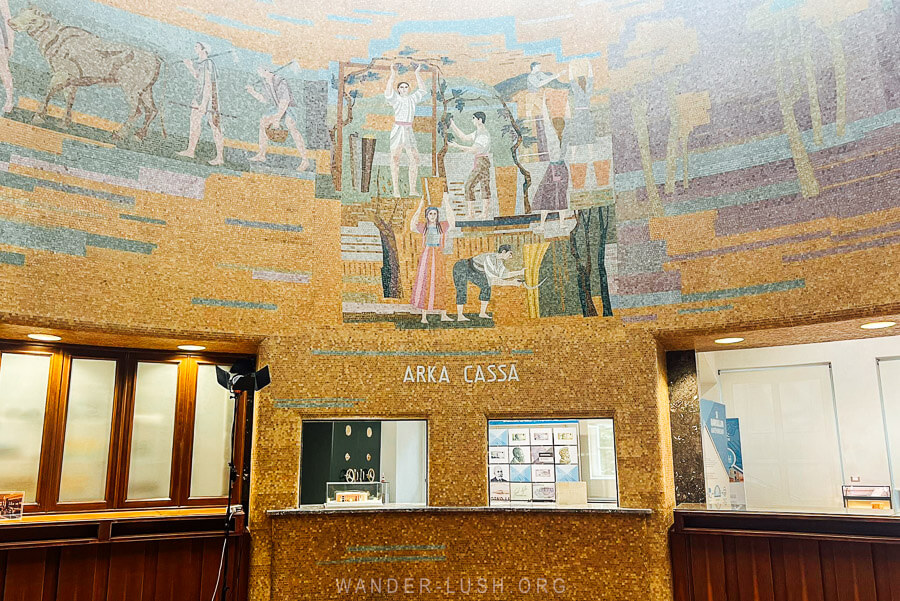
The Bank of Albania Museum has two exhibition halls located in the new section of the building, which was completed in 2015 based on the original architect’s sketches. The first room contains old teller desks set up with calculators and typewriters – every single piece of equipment being sourced from Italy. Downstairs, there is a great display of old coins and communist-period banknotes. Final stop on the tour is the vault where the gold ingots are kept.
To visit the Bank of Albania, you need to make an appointment at one of the allotted times on the website (currently Tuesdays, Wednesdays and Thursdays at 9am, 11am or 2pm). When you arrive, use the back entrance, leave your passport with security, and lock everything away before you enter. No phones or cameras are allowed.
My guide offered me her iPhone to snap a few pics. I also got a fun souvenir to take home: An Albanian bank note with my face printed on it.
10. Tour the fascinating Women’s Museum
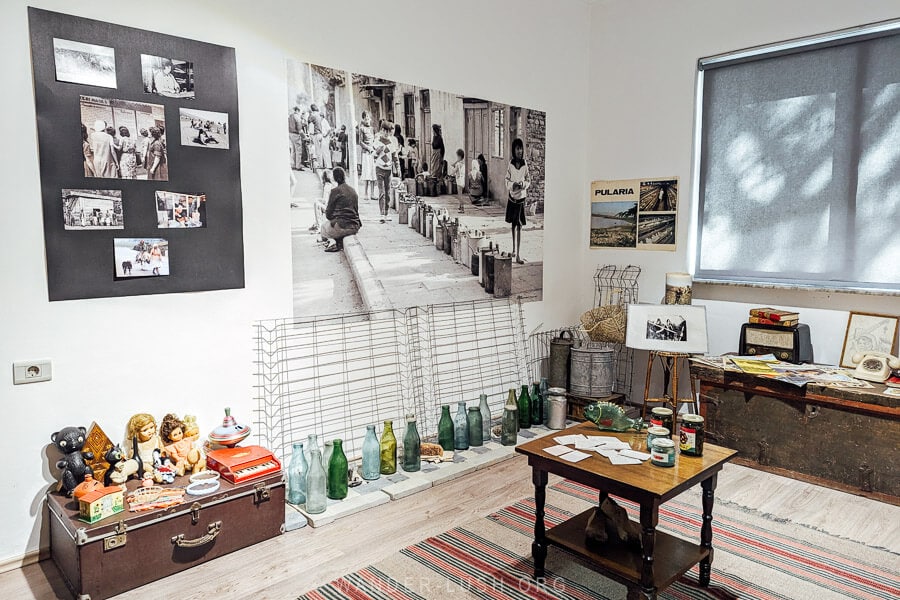
The Women’s Museum is another small and lesser-known museum in Tirana. Founded by journalist-activist Elsa Ballauri, it is located inside a suburban apartment from the 1960s – which in itself is very interesting to see.
Elsa has curated a collection of archival photographs, antiques and everyday trinkets, with everything tied back to the role of women in Albanian society. Many of the objects on display – including a piano, considered an ‘enemy object’ by the communists, and a ‘House Book’ used to keep track of the family’s visitors – belonged to Elsa’s grandmother.
I personally found the second room, which explores women under communism, the most interesting. Original ration cards and photos of food lines really drive the reality of the situation in Albania a few short decades ago home.
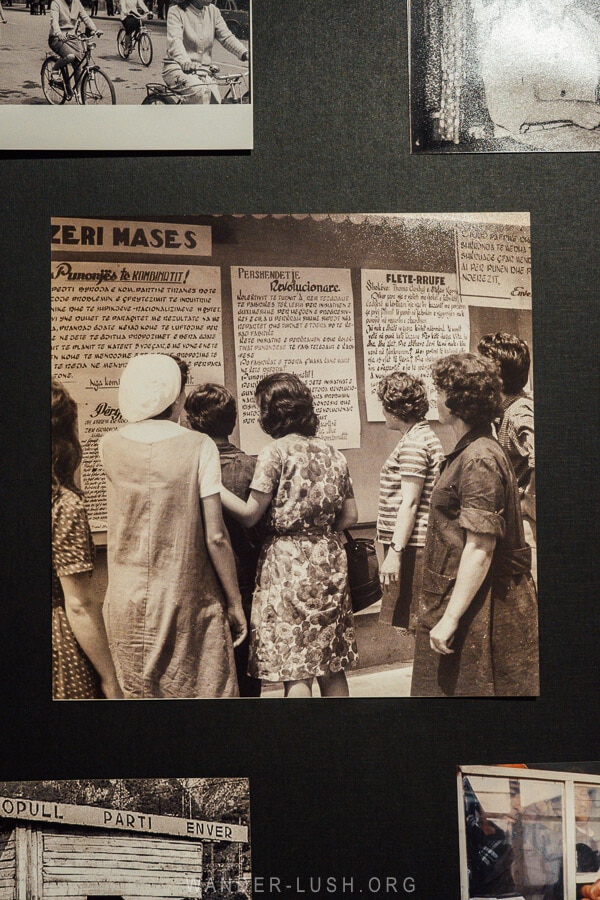
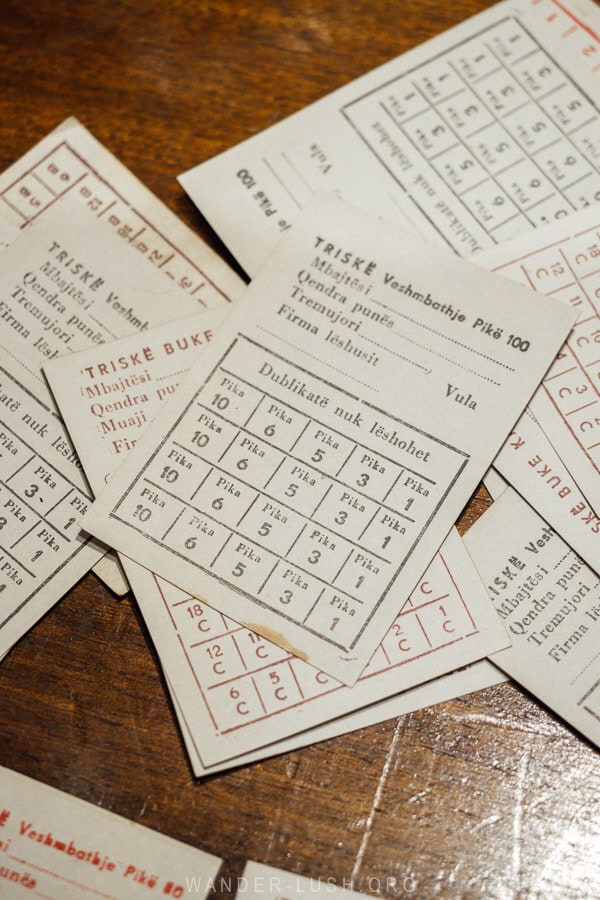
Elsa is a fascinating and passionate person. Call or email her ahead of time to organise your visit. The entrance to the museum is on the courtyard-side of the building. Follow the sign up the stairs, and knock on the apartment door.
The 500 LEK entrance fee includes a guided tour of the exhibition courtesy of Elsa herself, plus a chocolate and a coffee if you have time to sit and chat.
11. Walk in the footsteps of Ismail Kadare, Albania’s national author
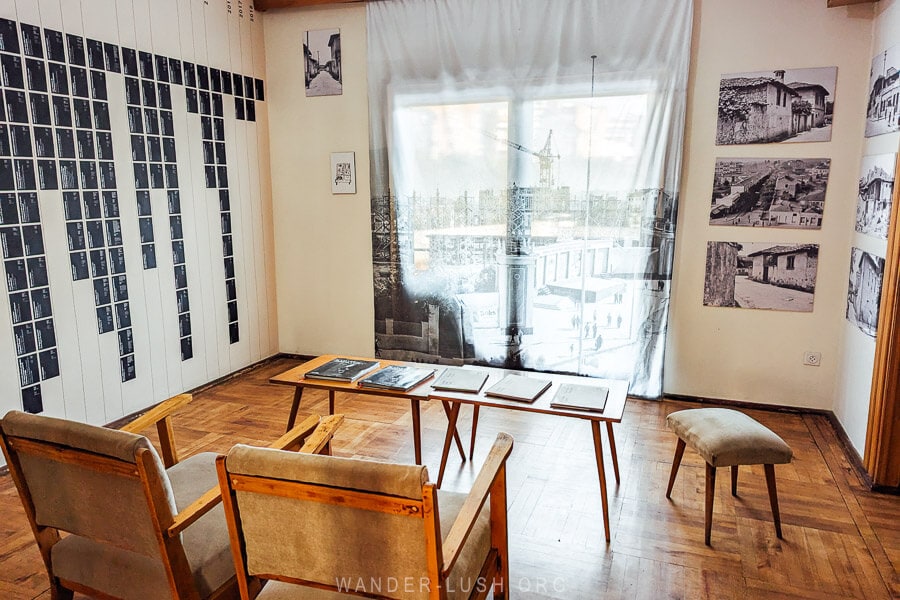
Booker Prize-winning author Ismail Kadare was born in Gjirokaster but spent much of his adult life in Tirana. One of his apartments, where he lived with his family for 14 years, has been transformed into a small house museum.
I will be honest: I knew very little about Ismail Kadare before I arrived in Tirana, and I still haven’t read any of his books. If you’re a fan of his novels then a pilgrimage to his apartment is a must. And even if you don’t, you will still find it interesting.
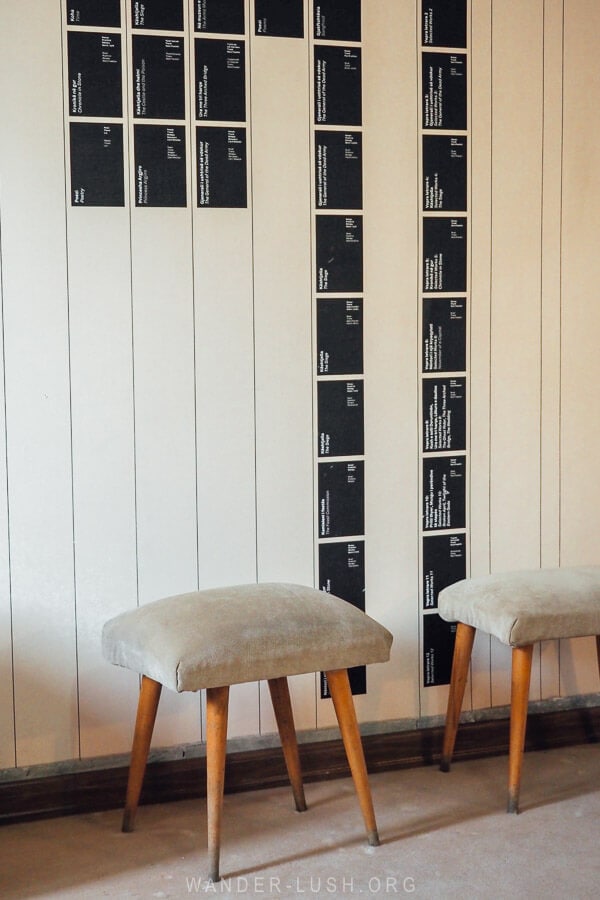
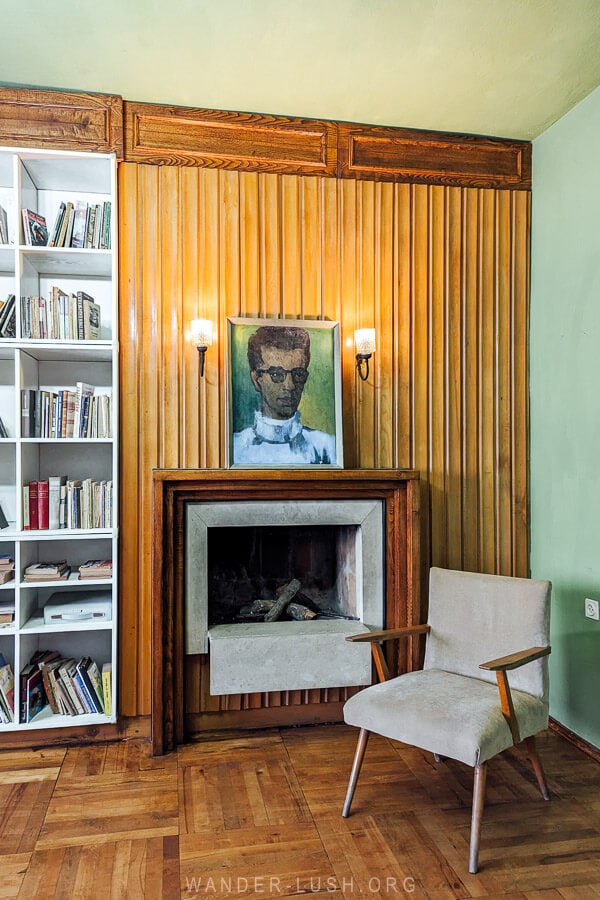
That’s because Kadare is much more than an author – he is a keen observer and a window onto Tirana and Albania. Old photos of the city interspersed with poignant quotes from his novels adorn the walls of the old study and living room. Visitors are invited to pull open the drawers of the sideboard to discover tidbits from the city’s history.
The Muzeu Kadare is also a love letter to the apartment building itself, with architectural blueprints and floor plans incorporated into the exhibition. With so many of Tirana’s old blocks at risk of demolition, it’s an important reminder of the stories and histories these buildings hold.
The Muzeu Kadare is open from 10am-5pm Tuesday to Friday and 10am-2pm Saturday. Entrance costs 500 LEK.
Alternative things to do in Tirana
12. Search for street art in Tirana
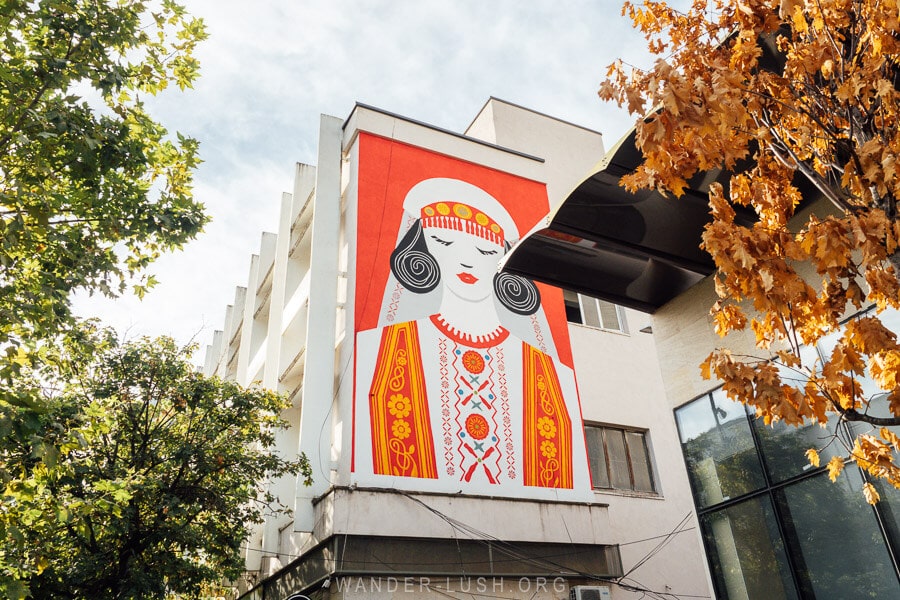
When I first arrived back in Tirana I was blown away by the number of large-scale street art pieces I could see from the bus window. Tirana has always been a colourful city thanks to its painted apartment buildings, but it has really upped its street art game in the past few years.
Several street art festivals have been staged in the capital since 2018, bringing international and local artists to Tirana to do their thing.
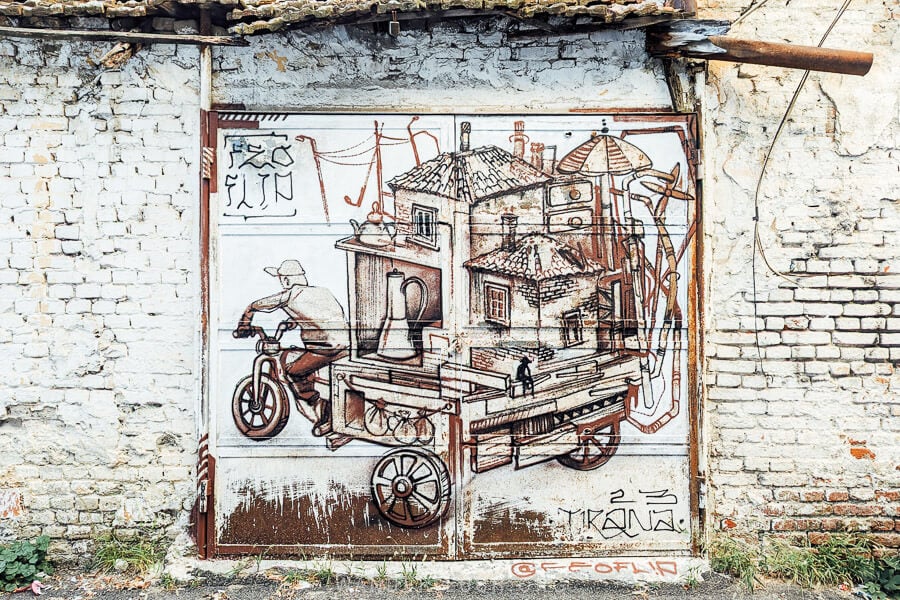
The New Bazaar neighbourhood and Student Quarter seem to have the highest concentration of murals. You can literally find paintings on almost every block, including in the very heart of the city.
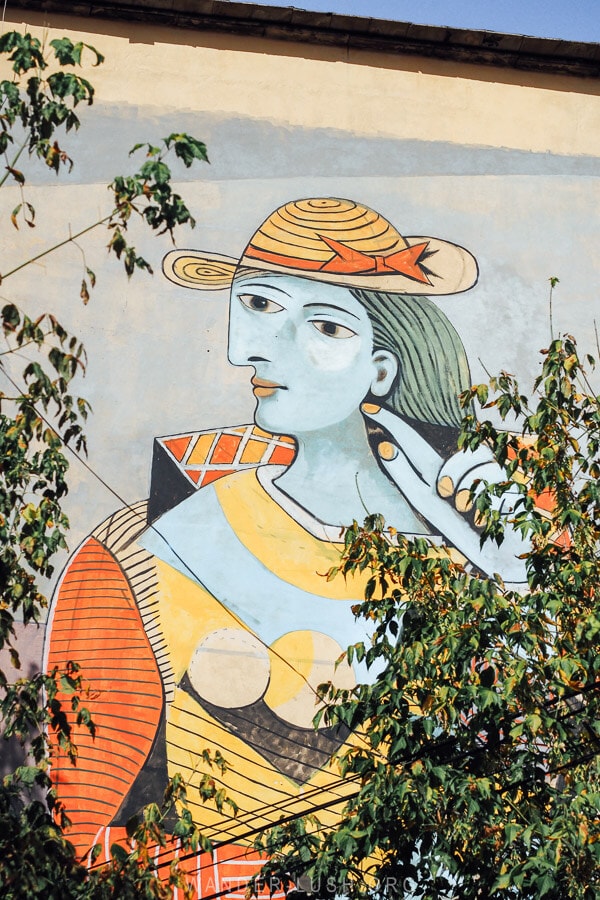
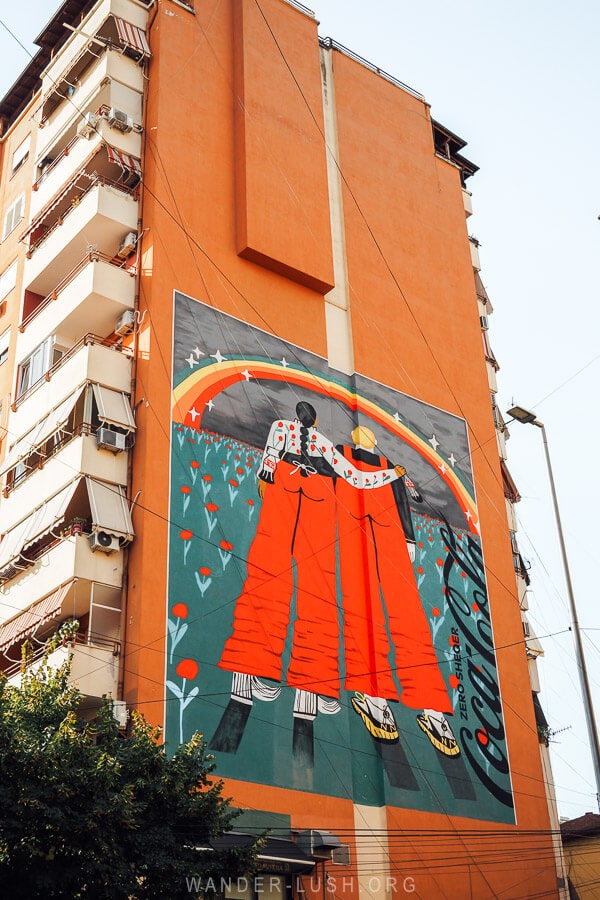
One of my favourites is located just off Skanderbeg Square: ‘Mother’s Care’ by German artist Case Maclaim (who has also made his mark in Batumi in Georgia).
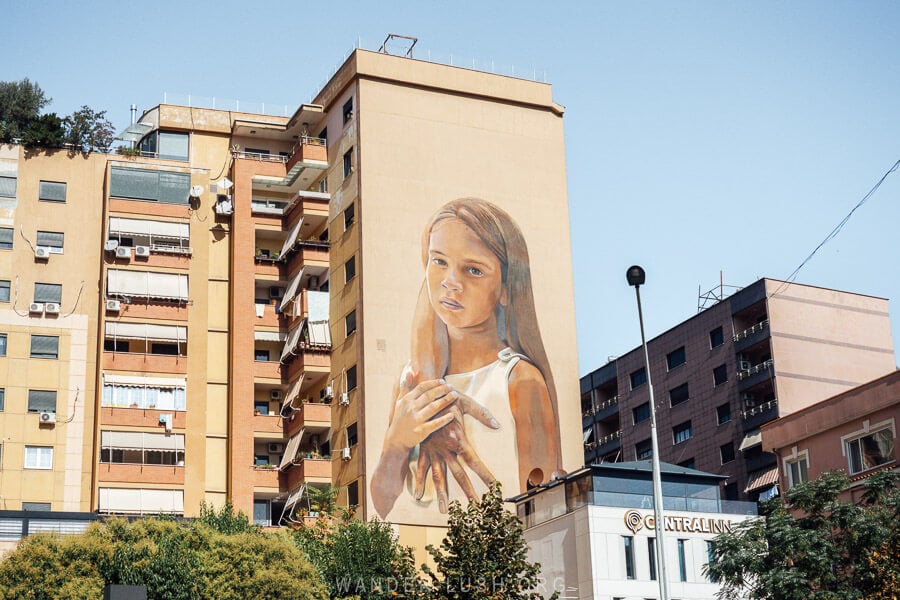
The striking piece by Franko Dine pictured at the top is located on the north-facing side of a building on Zogu I Avenue.
This street art map is incomplete, but it’s a helpful starting point if there are particular murals you want to track down.
13. Photograph the Tyrbja e Kapllan Pashes
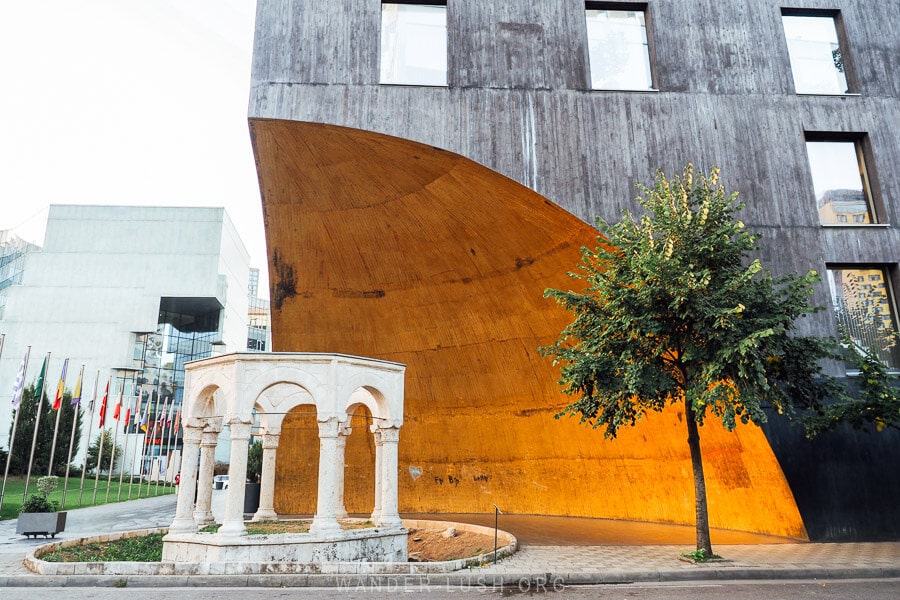
This frame perfectly captures the synergy between old and new that makes Tirana such a cool city. I had seen many versions of this photo online and was keen to recreate it myself – after a few failed attempts, I think I finally managed to get a photo I am happy with!
The octagonal stone structure is the Tyrbja e Kapllan Pashes or Kapllan Pasha Tomb, a 19th-century tomb built for the first ruler of Tirana (his remains have since been repatriated to Istanbul). It represents the legacy of the Sylejman Pasha Mosque, which stood on this spot until it was destroyed in WWII.
The new construction, the 5-star Plaza Hotel, arcs over the tomb and has been designed to accommodate and accentuate the monument.
The best time to head to this spot for a photo is in the very early morning before cars and taxis start congregating in front of it.
14. Take an evening xhiro on Toptiani Street & walk through the Fortress of Justinian
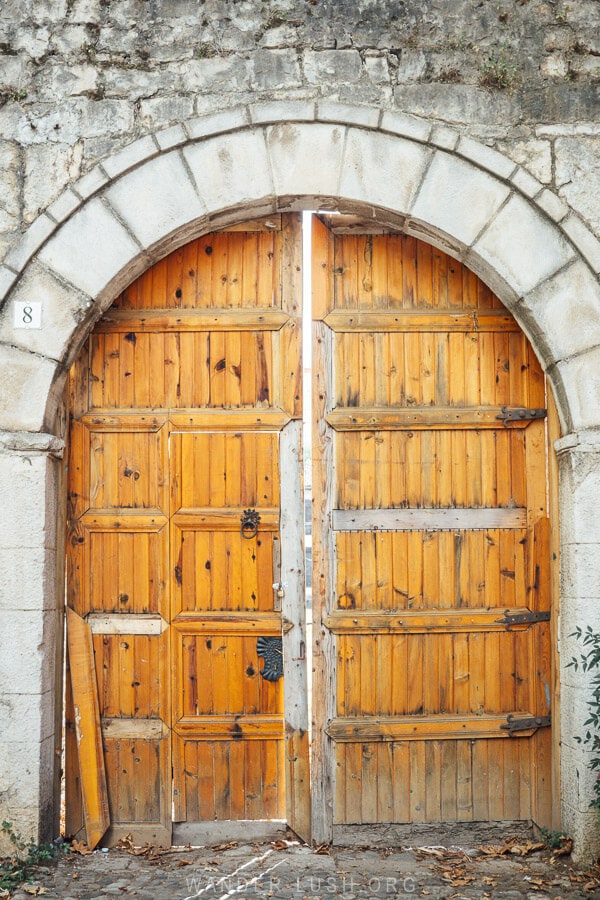
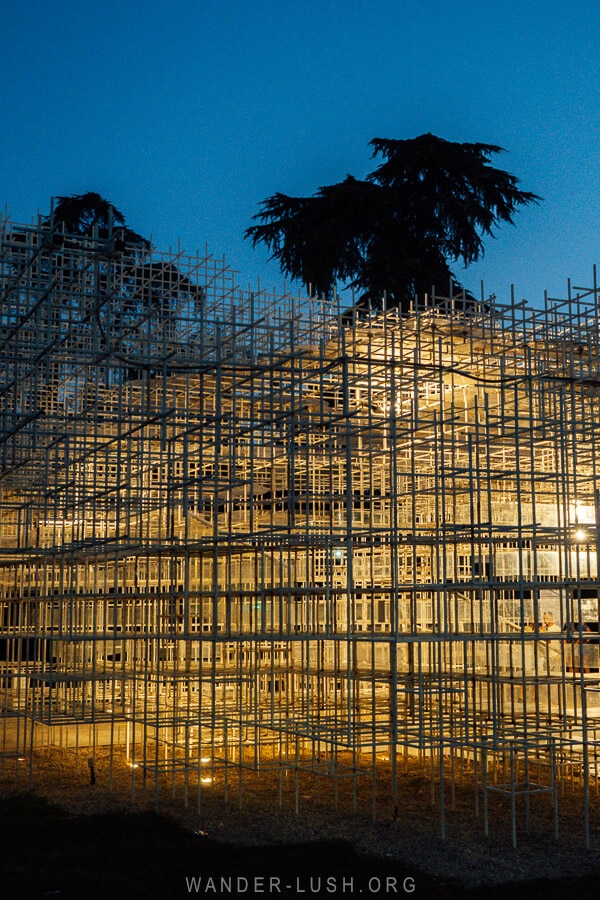
The xhiro is an Albanian tradition – it basically involves walking (and gossiping) your way up and down a pedestrian street at dusk. The whole city gets in on it, making it a golden opportunity for people-watching and street photography.
Toptani Street is Tirana’s main pedestrian mall and appears to have been designed specifically for xhiro-ing. The wide, paved street has coffee shops, juice bars and ice cream parlours at regular intervals lest you need to refuel along the way.
Stop off at The Cloud, a public art installation by Japanese artist Sou Fujimoto. It looks magical when lit up at night.
This is a good time to mention that the collection of communist statues (including giant effigies of Stalin and Lenin) that once stood behind the National Art Gallery have been relocated while the building undergoes renovation. Two of the statues depicting Hoxha and a miner hoisting an axe are hidden behind The Cloud. The statues of Stalin and Lenin stand in the garden at the former prime minister’s residence in Blloku. The area is off-limits to the public, but the statues can be seen through the gate.
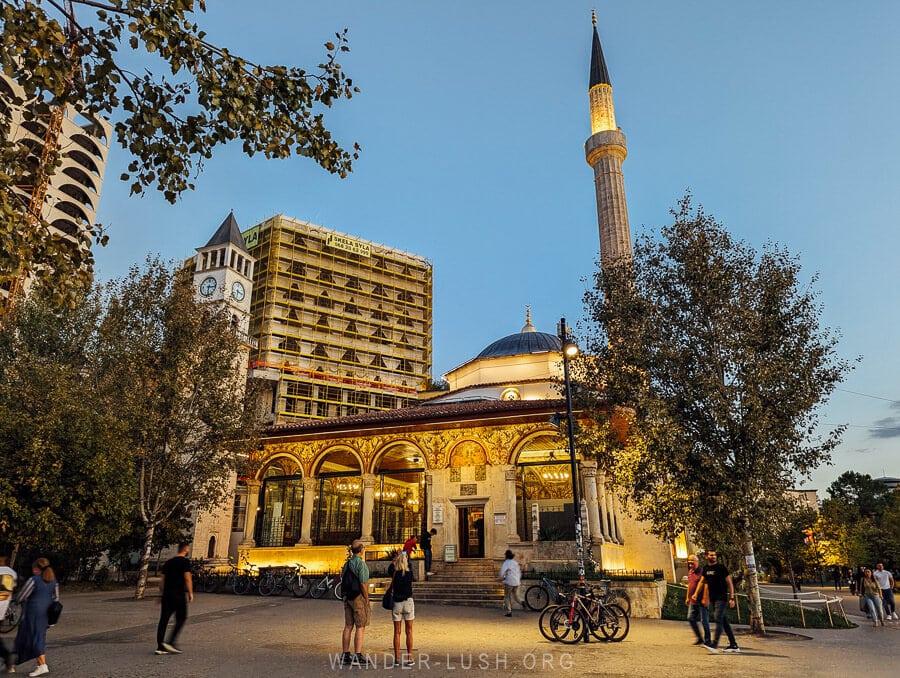
At the eastern end of Toptiani, the Byzantine-era Tirana Castle or Fortress of Justinian has been transformed into a dining and nightlife precinct. Walk through one of the historic gates to enter the inner sanctum: A pedestrian zone lined with fancy wine bars, classy restaurants, and gift boutiques that stay open until late. Porcelain Studio Seferi sells beautiful ceramics and tableware hand-painted with traditional Albanian motifs.
I don’t necessarily recommend eating inside the fortress, however – see my restaurant recommendations in the next section.
15. Browse the New Bazaar (Mercado Pazari i Ri)
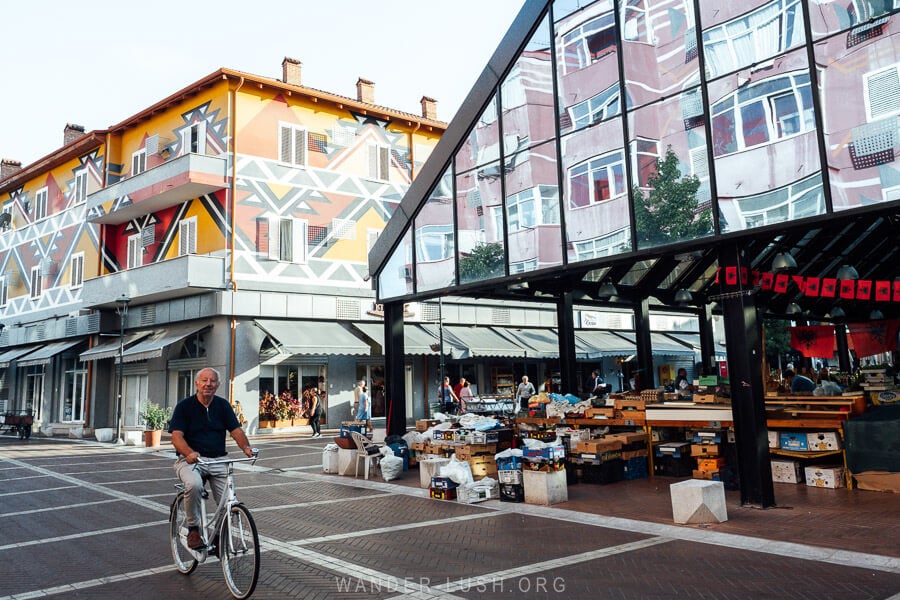
Tirana’s New Bazaar or Mercado Pazari i Ri is both a marketplace, and the name of the district it engulfs. It occupies several city blocks immediately to the east of Skanderbeg Square. As I mentioned earlier, we stayed in this neighbourhood on our recent visit and really enjoyed the vibe.
The main part of the New Bazaar is an open-air hall covered by a glass A-frame that reflects the colourfully painted buildings adjacent. Stalls sell bundles of thyme, bay laurel and chamomile, packets of mountain tea, loose-leaf tobacco, spices, dried fruits, and in autumn, pomegranates, figs and grapes. There are bottles of raki in every flavour, kitchen utensils whittled from olive wood, woolly socks, and other souvenirs.
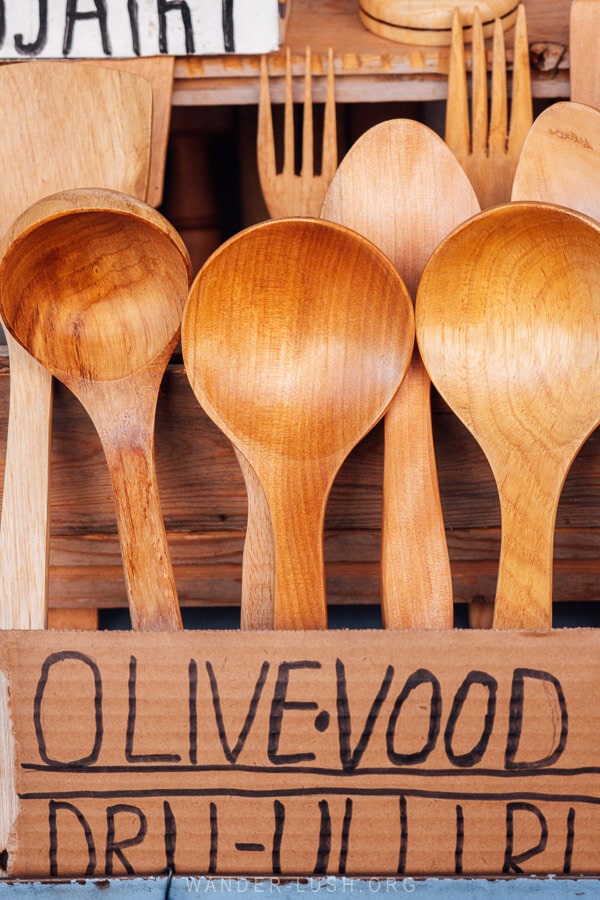
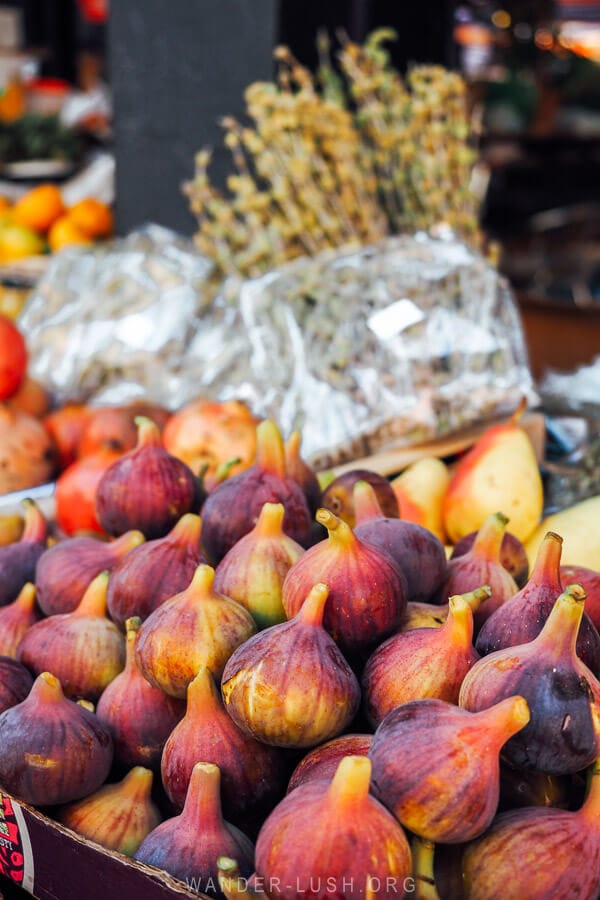
Around the edge of the market there are small shops selling artisan food products plus a few bakeries and restaurants. The little byrektore called Albjon 1994 serves up some of the best burek in town – crispy and chewy, the spinach version reminded me of a really good paratha.
As you walk through the market, look for the antique wooden door frozen in a glass case. It belonged to the Hatibi family home, built in 1932 where the New Bazaar now stands. The restored Kokonozi Mosque has a pretty interior with floral frescoes inside its dome.
16. Go antiquing
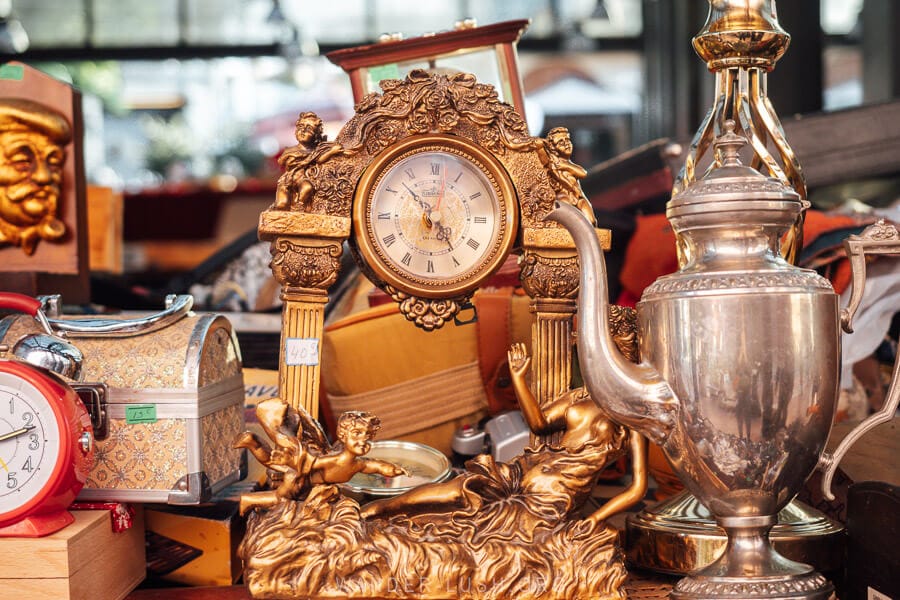
There are a couple of excellent antique shops in and around Pazari i Ri that are fun for a browse. Dyqan Antikuare & Artistike inside the New Market peddles a vast collection of old cameras, books, communist-era memorabilia and bric-a-brac.
On the next block, Antikuare Kruja (below right) is a small shop packed to the rafters with antique carpets and kilims, textiles, wooden instruments, painter’s canvases, old clocks, radios, and more.
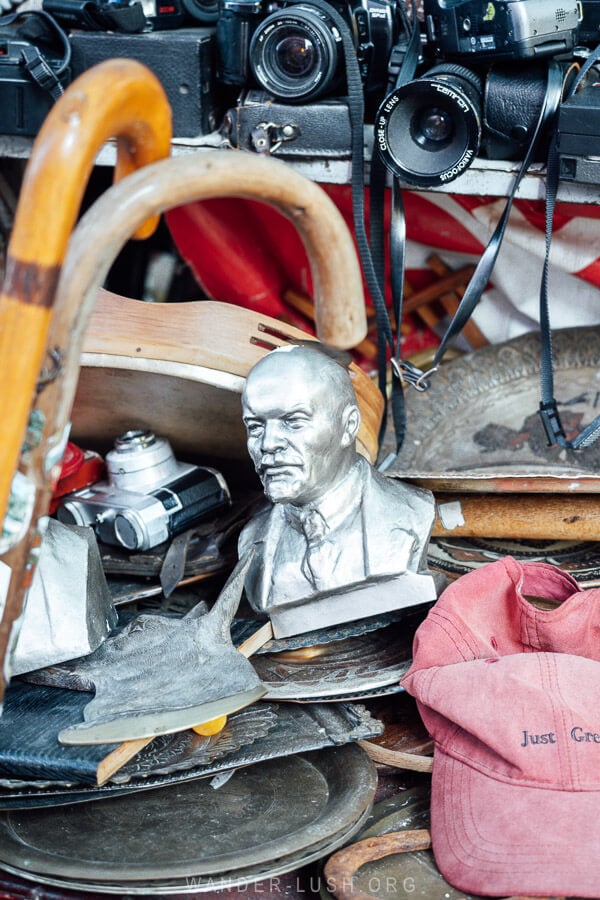
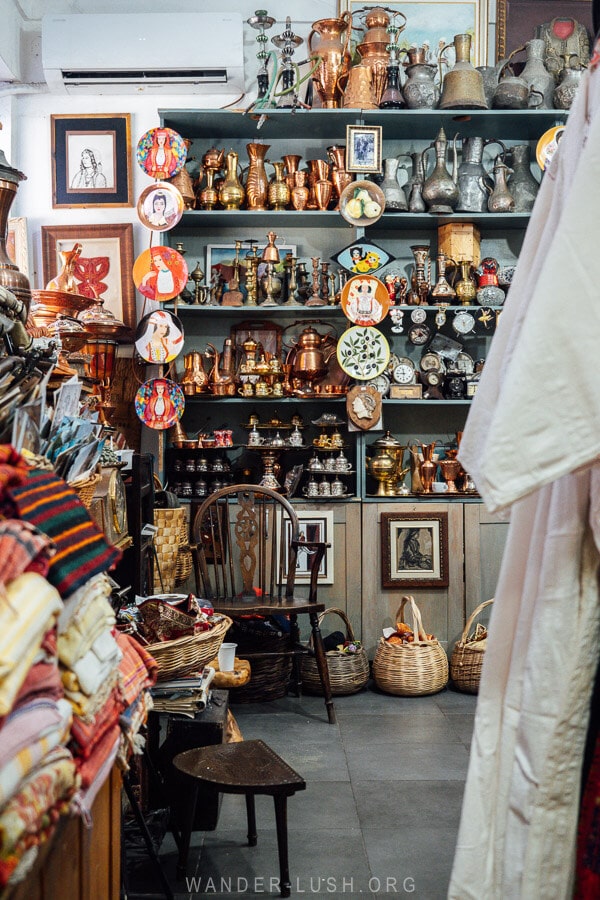
Wander the narrow Rruga Shenasi Dishnica to see the informal shops selling old bicycles, furniture and household items. This street is a world away from the New Bazaar and has some very old, very beautiful houses – keep an eye out for the ancient wooden doors with their Hand of Fatima knockers.
17. Ride the Dajti Ekspres cable car, hike to the viewpoint & urbex at the abandoned hotel
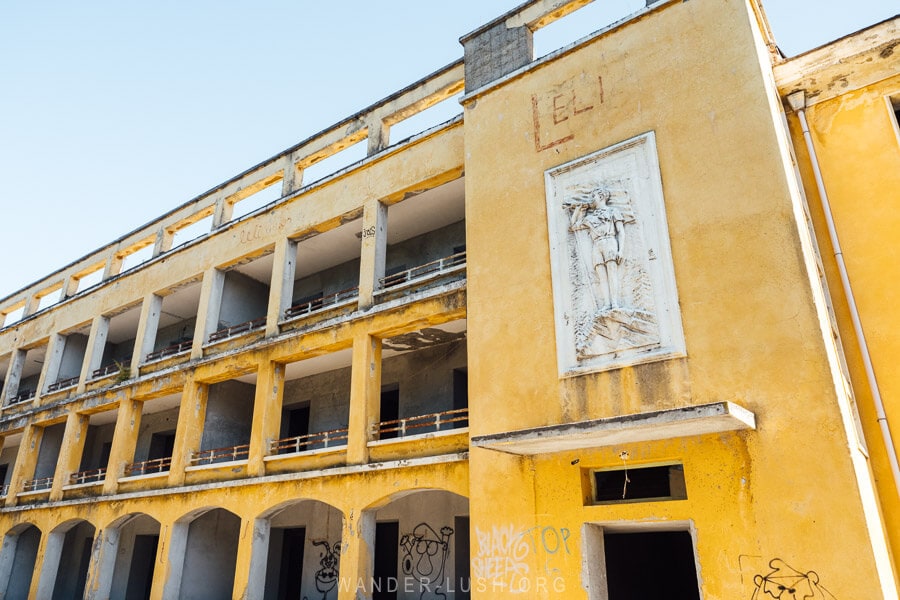
A side trip to Dajti Mountain from Tirana requires the better part of a full day. If you have a spare day in Tirana and you’re keen to break from the urban jungle and get some fresh air, then I highly recommend it.
The Dajti Express, a 4,354-metre-long cable car, ferries visitors up and down the mountain. Its lower station is located on the northeastern side of the city, close to Bunk’Art 1 (get there using the same bus as described above).
The 20-minute gondola ride is very steep and quite thrilling, with panoramic views of Tirana all the way up.
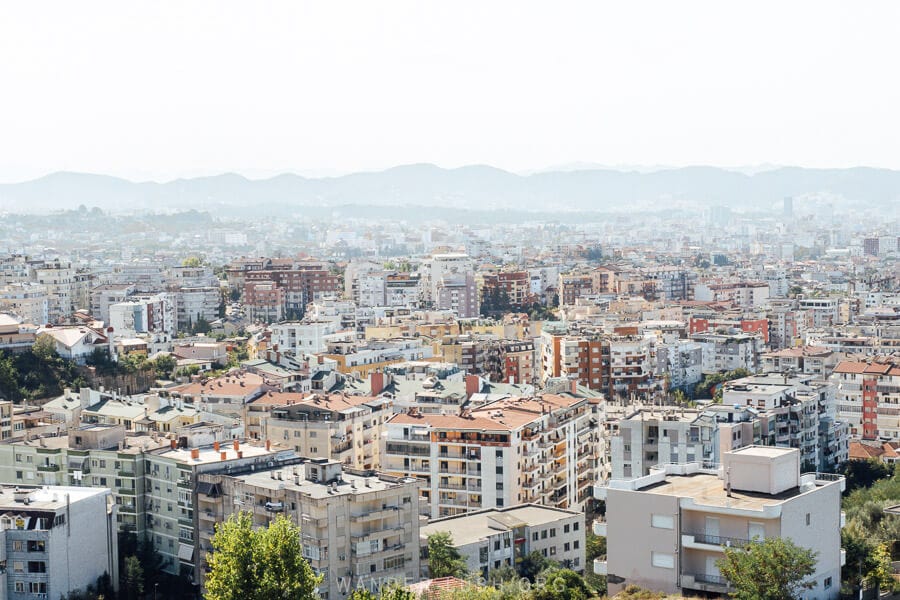
Once you reach the top, I recommend ditching the tourism complex and heading out into the hills.
Behind the station there is an abandoned hotel (or pioneer palace?) with interesting sculptural friezes on the front. We found it deserted and the rooms overturned.
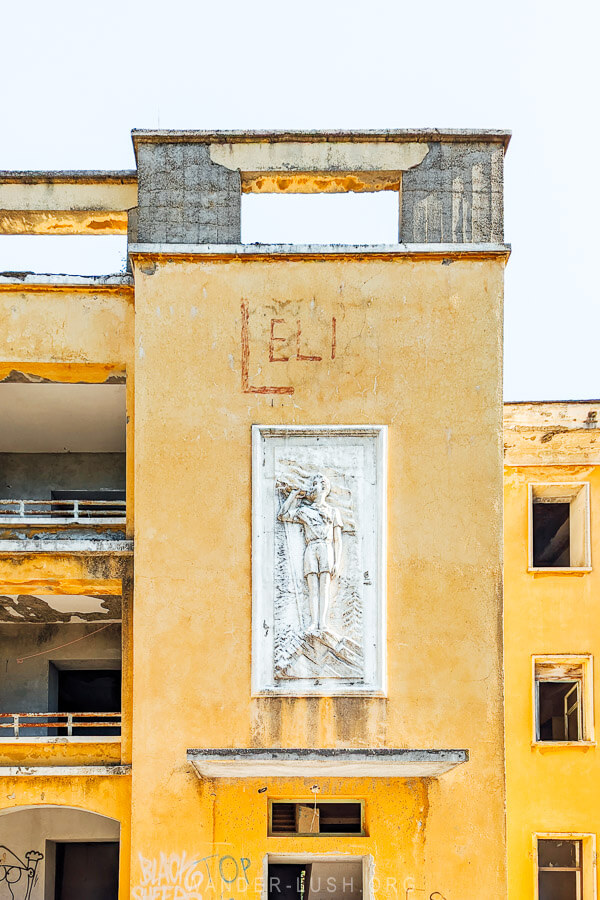
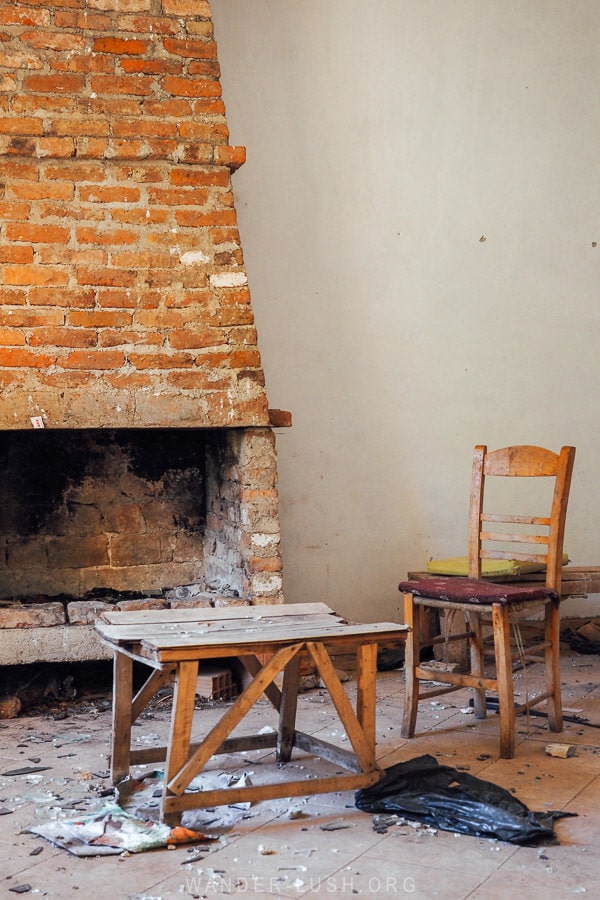
Behind the hotel, you will see the beginning of a marked trailhead for the Col of Qershia hike, an easy 1.5-kilometre walk to a spectacular lookout point. It starts with a steep scramble but quickly flattens out to a flat, completely shaded path.
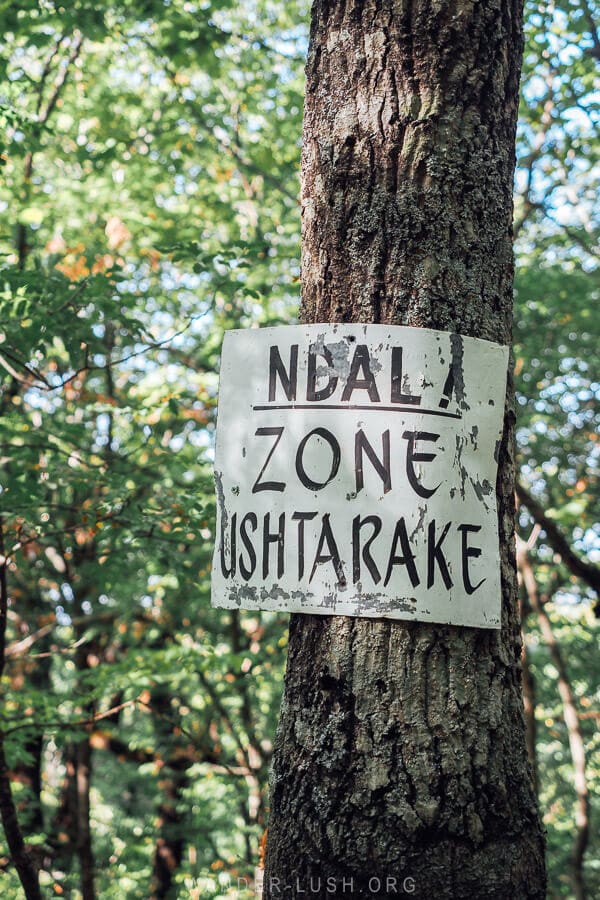
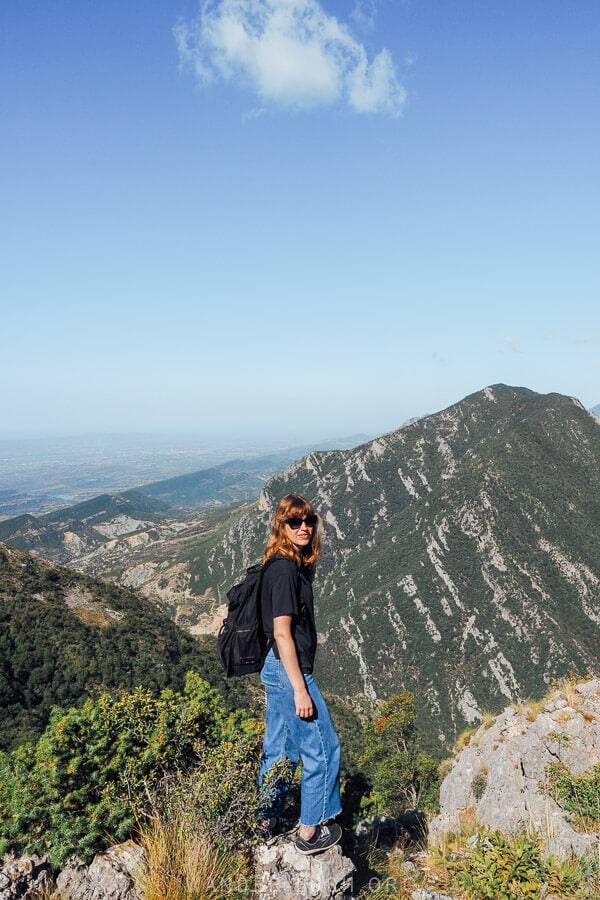
I managed the hike with zero fitness and lightweight sneakers. Follow the red-and-white painted flags and make sure you don’t accidentally wander off into the adjacent military zone.
Foodie things to do in Tirana
18. Bask in Tirana’s coffee culture
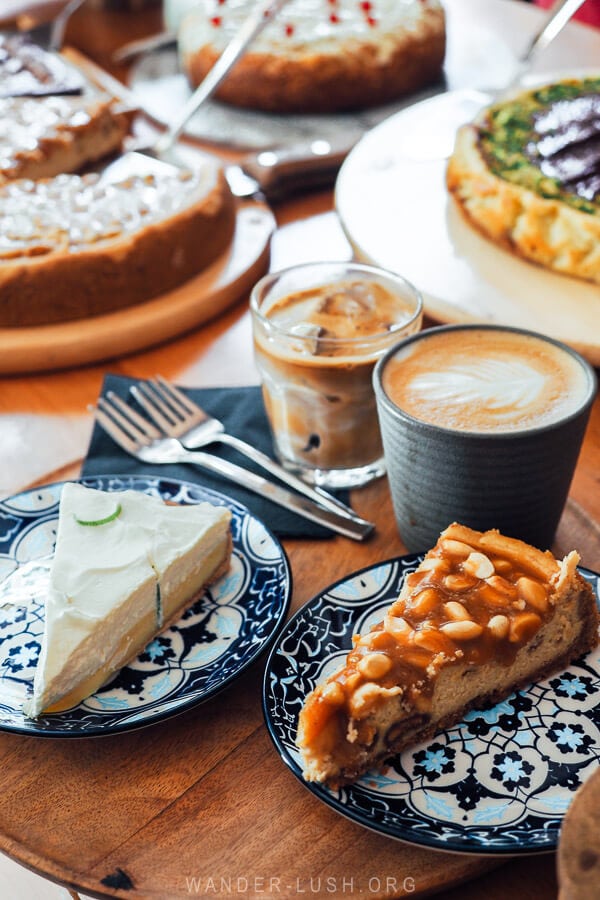
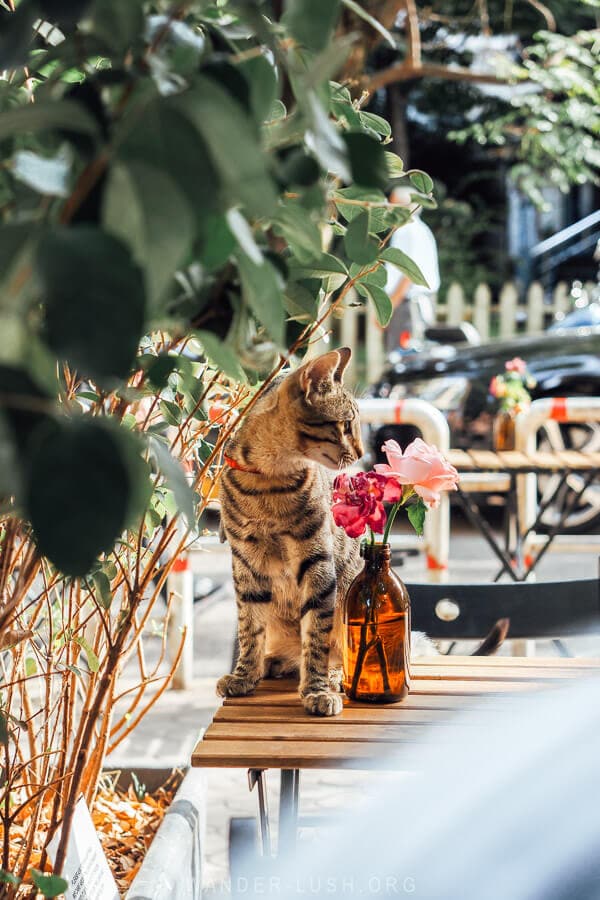
Albania takes the Greek kafenio tradition to another level. For every old-school coffee shop where gents gather to play checkers, there is a hip cafe packed to the rafters with young people.
The traditional beverages of choice are Italian-style espresso (ekspres) and Turkish coffee (kafe turke). I drank a minimum of four coffees per day during my month-long stay in Albania and literally never had a bad cuppa.
My favourite cafe chain in Albania is Sophie (I like their chocolate brownies). Hana Corner Cafe (pictured above) is an independent cafe close to Blloku that serves mouthwatering cakes (we tried the peanut butter cheesecake and the lime pie). Arrive when they open at 10am to claim a slice – they sell out fast.
A few notes on coffee etiquette. Most cafes in Tirana have table service and serve coffee with a complimentary glass of water. More up-market cafes such as Cafe Botanica on Skanderbeg Square (another favourite of mine) charge extra for a bottle of water. The waiter will leave the check on your table along with your drink. Tipping is customary (10%).
19. Sip a cocktail & drink in the views at Observator
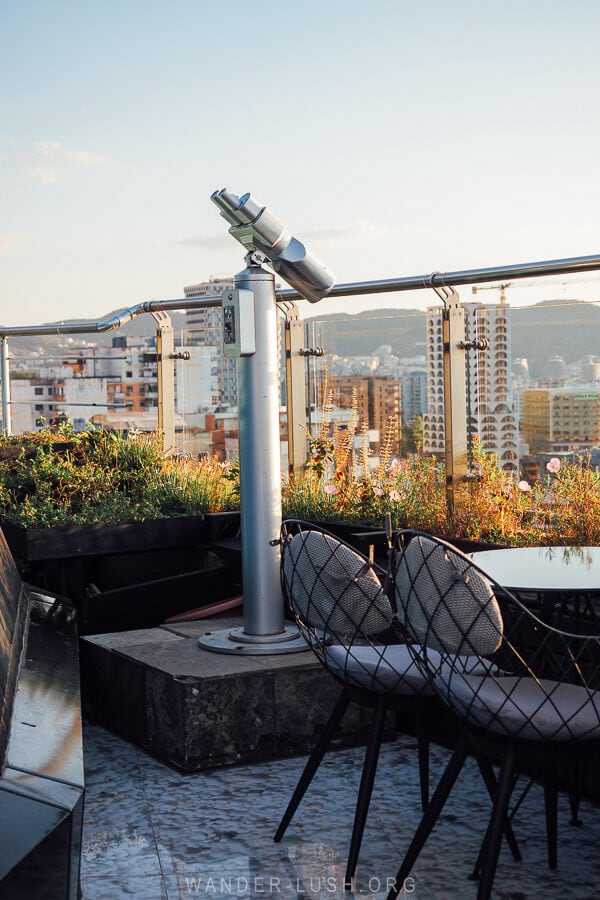
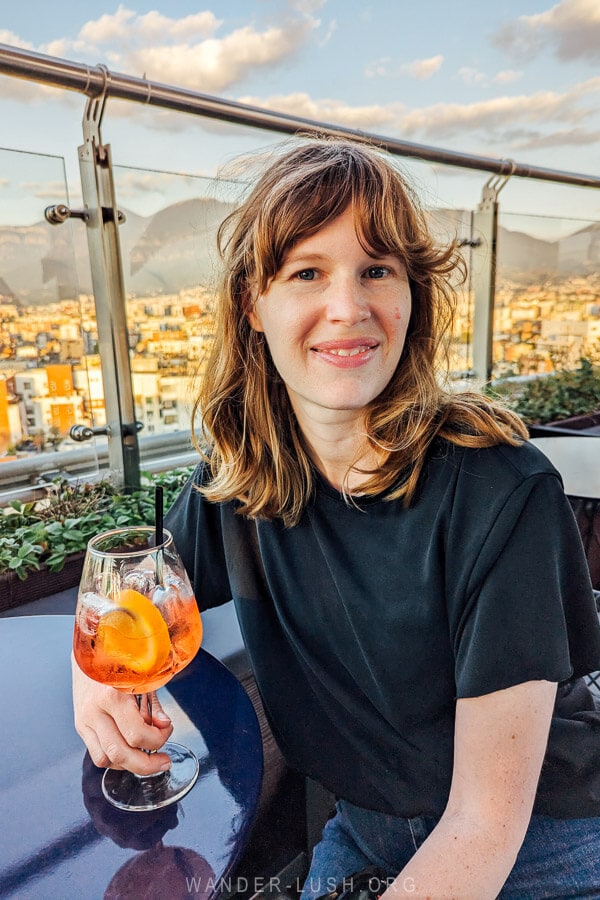
With the bar at Sky Hotel closed for renovation, I was searching for another bar in Tirana with a view. Walking distance from Pazari i Ri, Observator Wine and Piano Bar has reasonably priced drinks and most importantly, an excellent panorama from its 14th-floor, open-air terrace.
The decor inside is a bit dated, but the outdoor area is slick. There are glass barricades but they only reach so high, thus you can still get a good photo of the city centre with Mount Dajti in the distance.
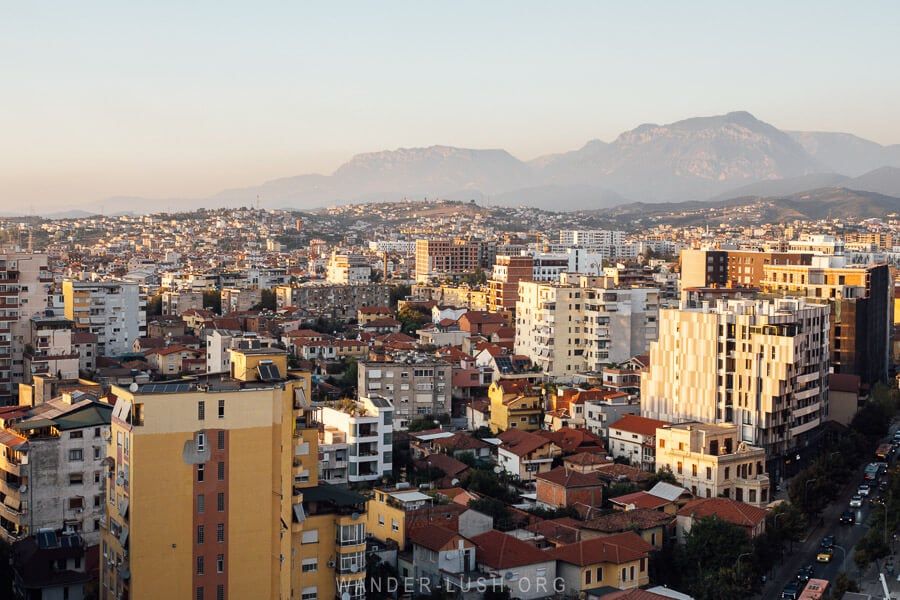
It’s interesting to look directly down on the apartments with their colourful awnings and external staircases.
Observator is open until midnight daily. Use the office building elevator to access the 13th floor, then take the stairs. I recommend arriving an hour or so before sunset to save a seat outside. Note that there is a dress code after 5pm (no shorts, tracksuits, tank tops or slippers).
20. Sample Albanian wine at Vena Vinoteka
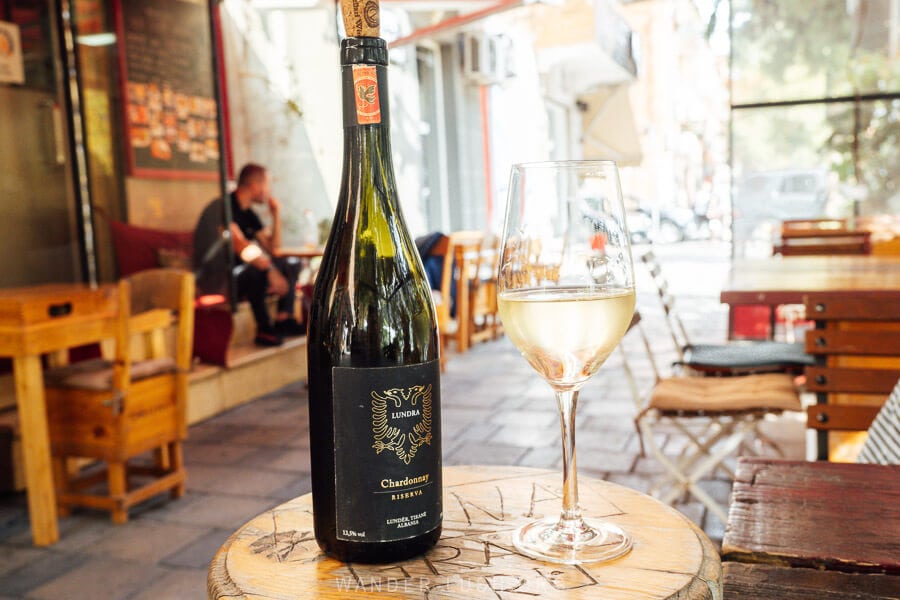
With a 3,000-year-old history of viticulture that likely began with the Ilyrians, Albania is considered an Old World Wine Country. This sweet wine bar and shop on the fringe of Blloku is the ideal place to sample wine from Albanian vineyards outside Berat and Leskovik.
Vena Vinoteka opens bright and early at 8am for breakfast. We rocked up before midday and weren’t sure if a wine tasting would be appropriate… Staff were warm and welcoming, letting us try three different local wines before pouring us two big glasses of Lundra Chardonnay and serving a generous antipasti board (bread sticks, olive tapenade and pickles).
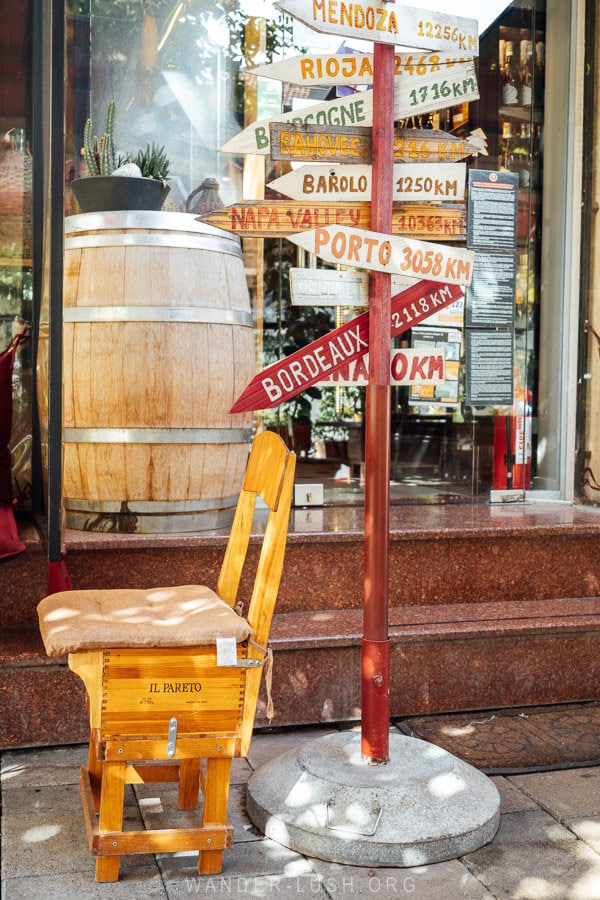
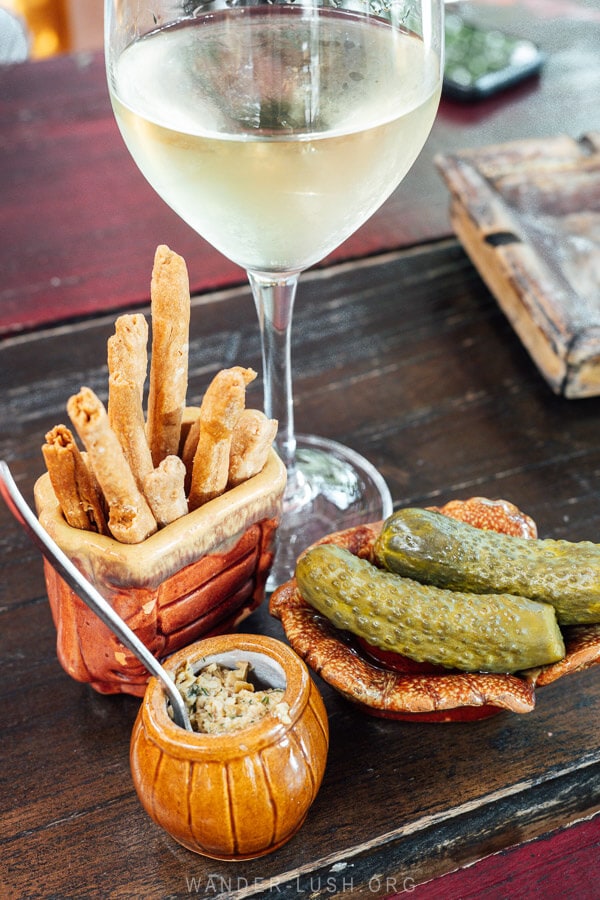
The shop has a huge selection of bottles both from Albania and the rest of Europe. When you buy a glass, you get a 30% discount on the bottle to take home.
21. Eat farm-to-table at Fustanella Farm on the outskirts of Tirana
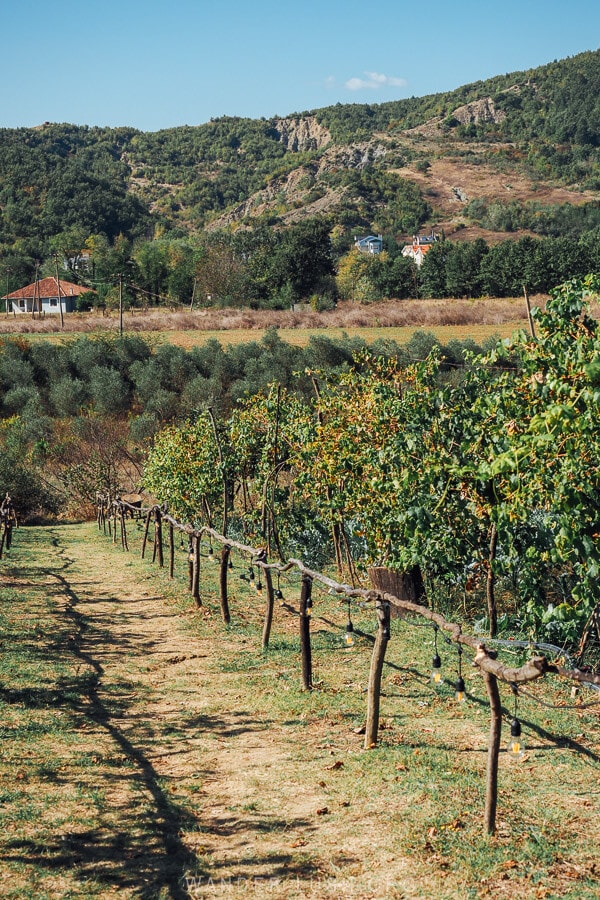
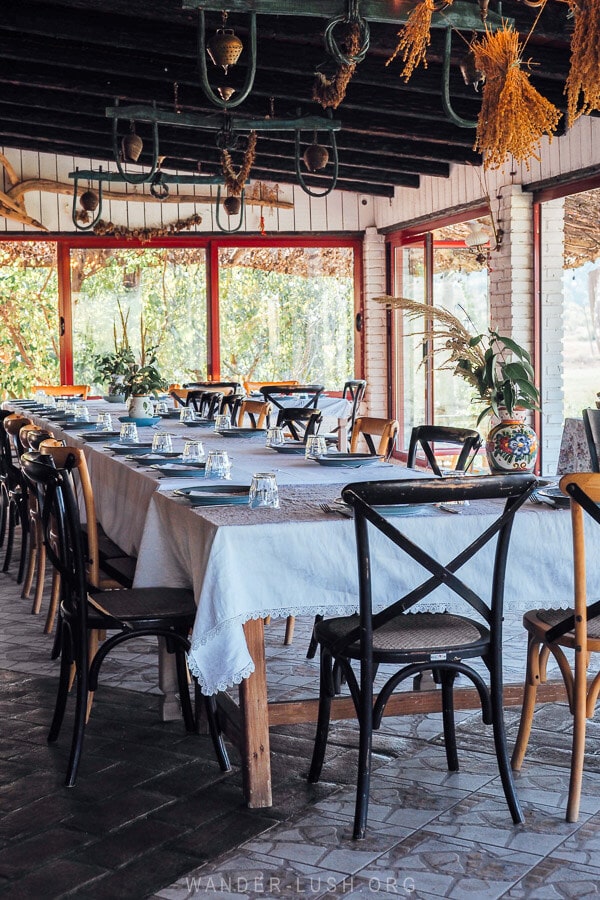
Agrotourism, farm-to-table and slow food is all the rage in Albania at the moment. We experienced some of the country’s best eating in the emerging slow-food capital, Permet, later in our trip. You can find restaurants that adhere to this philosophy in Tirana too, with Mullixhiu being the most well-known.
Fustanella Farm is a rustic farmhouse-style restaurant located 30 minutes by road from Tirana centre in the village of Petrelë. We stopped here for lunch on the first day of our road trip en route to Berat. If you don’t have a car, you can reach the restaurant by taxi.
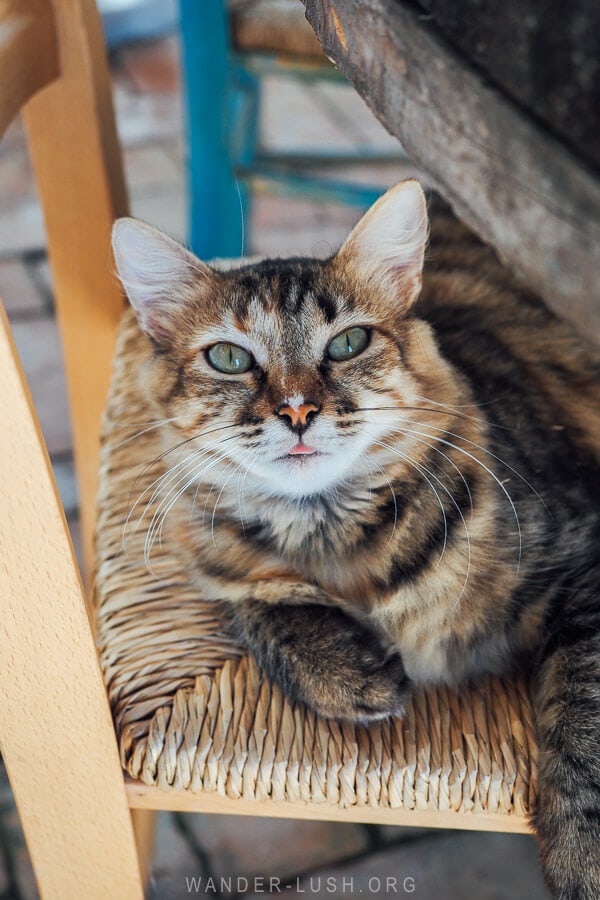
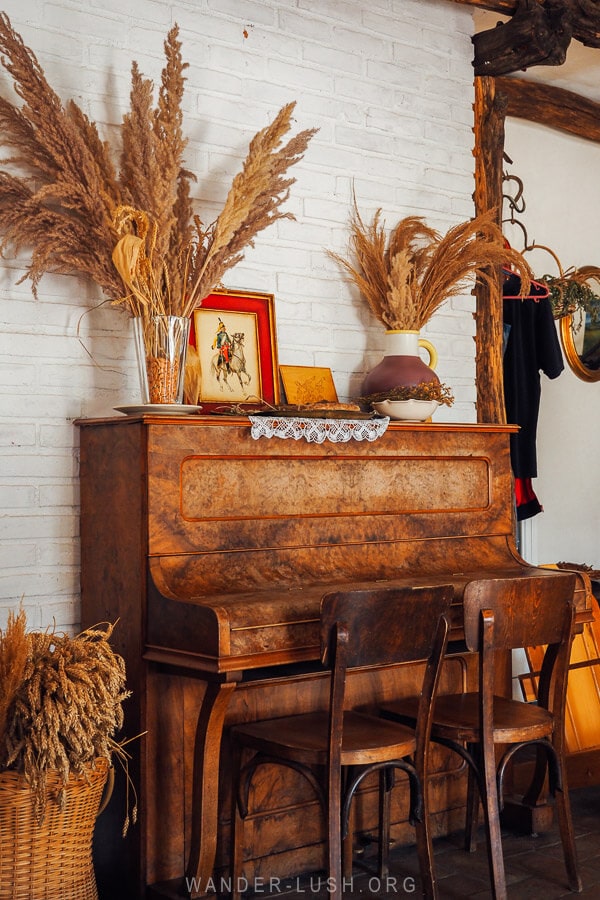
The setting amongst rolling green hills is absolutely sublime. Georgia has got me accustomed to looking out over vineyards – this time it was cabbage patches, olive groves and pomegranate trees that dominated the view from the balcony.
Seasonal offerings change so frequently, the menu is hand-written only in Albanian. Our lovely waiter patiently translated everything for us. We settled on a beetroot and orange salad, homemade byrek, hummus, and potato croquettes. Even the house bread and herb butter was divine.
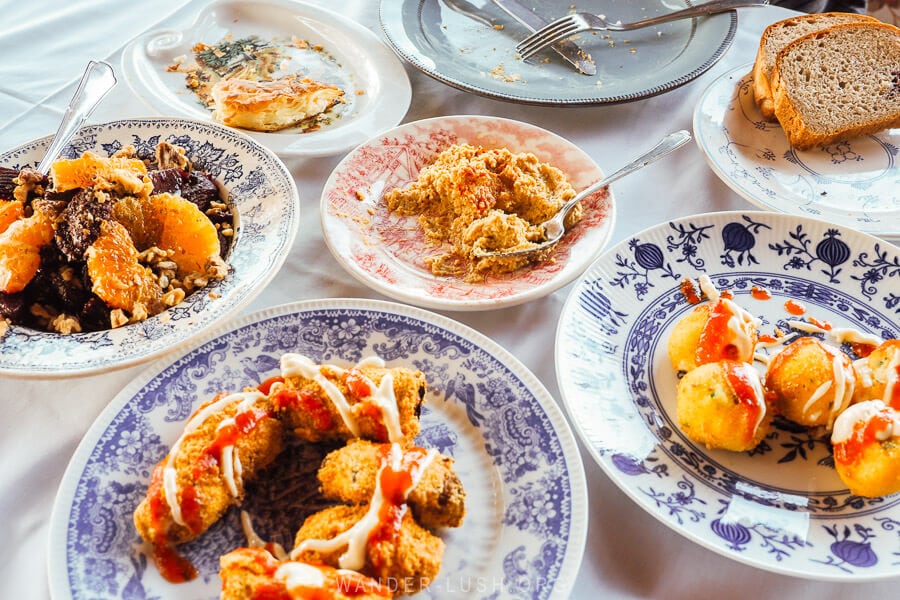
The kitchen at Fustanella Farm opens for lunch at 12.30pm. Reservations are recommended, especially in summer.
Where to eat & drink in Tirana: My favourite Tirana restaurants
Along with Fustanella Farm, Vena Vinoteka and the other eateries already mentioned, here are a few more food suggestions for Tirana. You can find all these locations pinned on the Tirana Map linked at the top.
Era Blloku – Our best traditional Albanian meal in Tirana. I recommend the meatballs with pistachio and yogurt, and the Kosovo sausage.
Shije Fshati – Taste of the Village – Another cute, traditional restaurant with all the classics. I love their crispy cornbread dish served with ayran yogurt and olive oil.
Zgara Te Pazari – A local grill joint near Pazari i Ri with yummy meatballs, shish and beer on tap.
Pasta e Basta – For authentic Italian-style pasta.
Spaghetti Western – Juicy burgers, BBQ and Tex-Mex, if you’re in the mood for something a bit different.
Byrek Special Luani – This local favourite byrektore opens early at 6.45am and is perfect for a quick, affordable breakfast.
Fabrika – Delicious gelato and ice cream on Zog I Boulevard.
Where to go next: More ideas for Albania
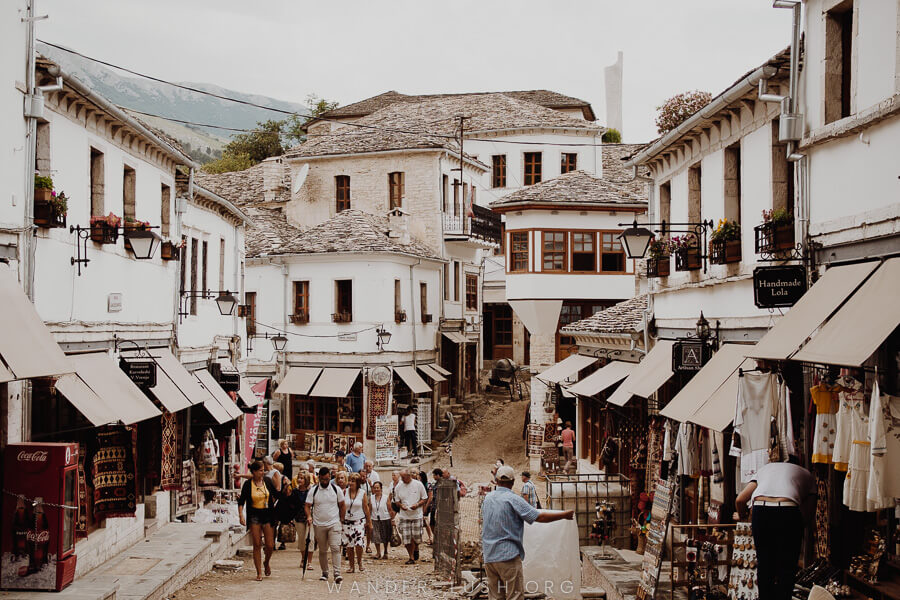
Albania Travel Guide
Discover insider tips, itinerary inspiration, and all the best things to see, do and experience in Albania!
Albania Essentials
My favourite resources and tools for planning a trip to Albania.
More from Albania
Albania Travel Guide
Discover insider tips, itinerary inspiration, and all the best things to see, do and experience in Albania!
More from Albania

